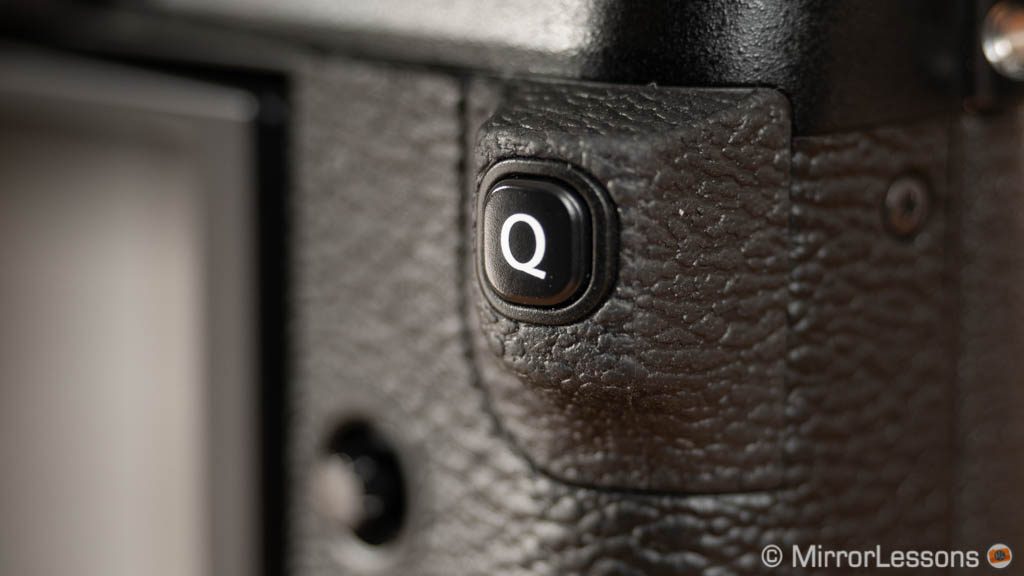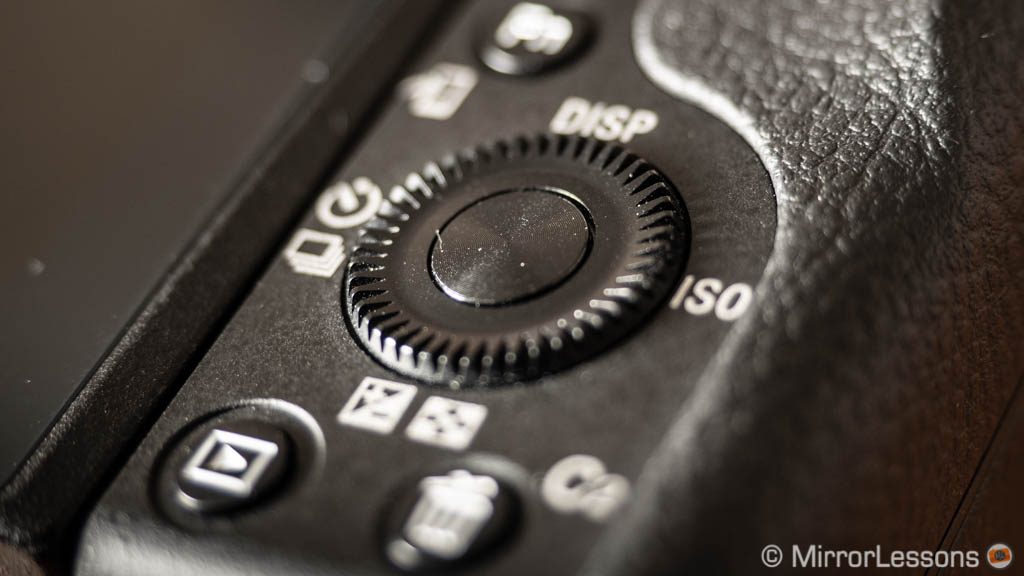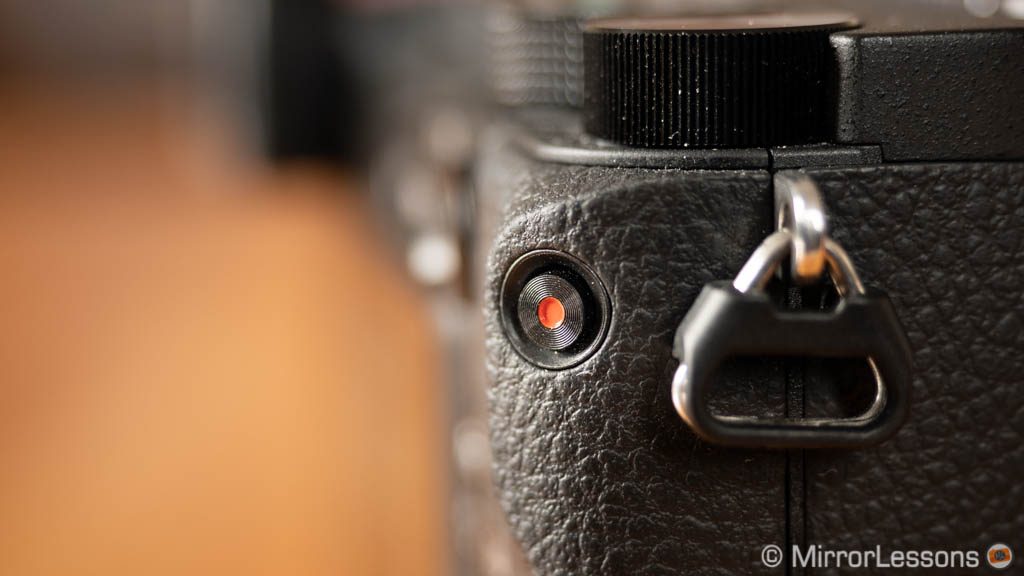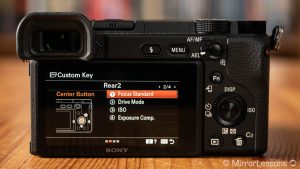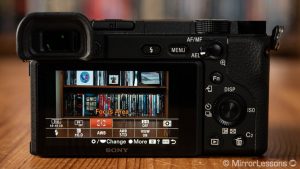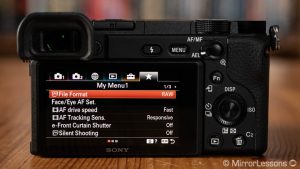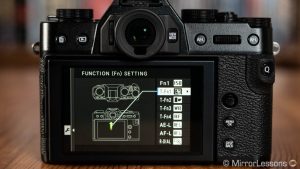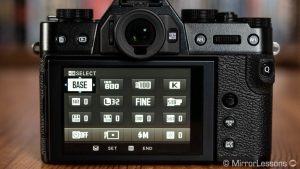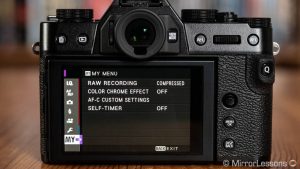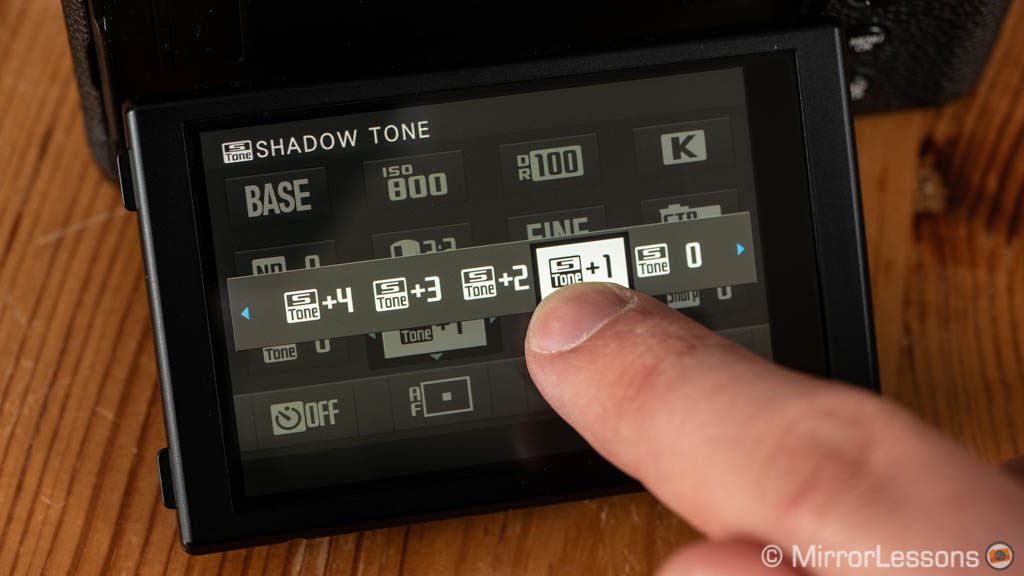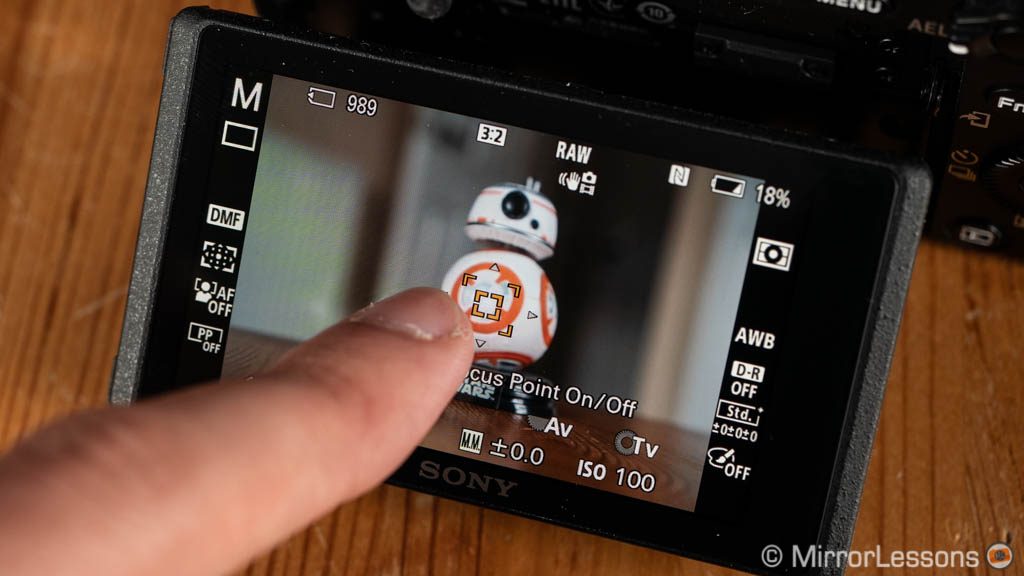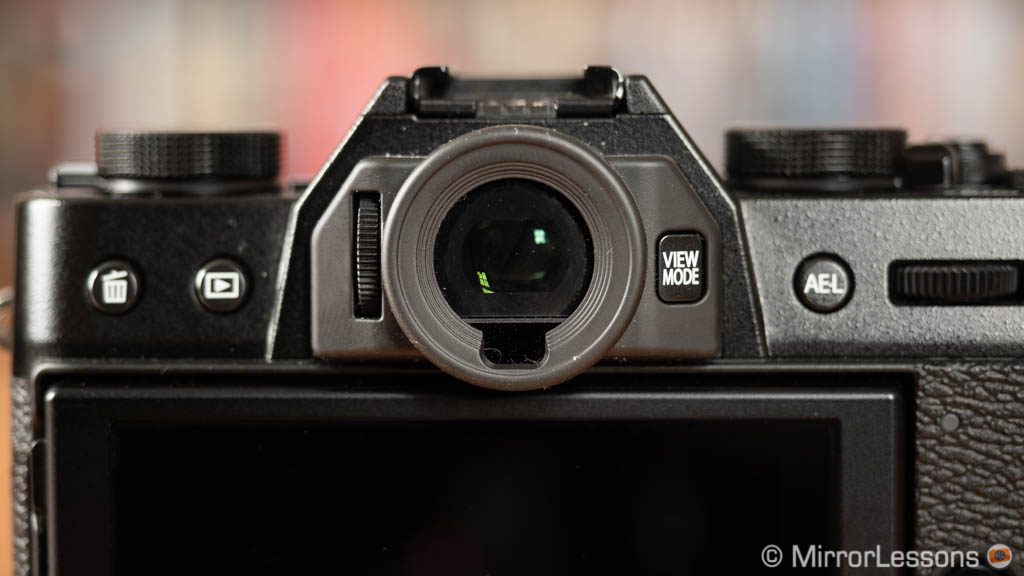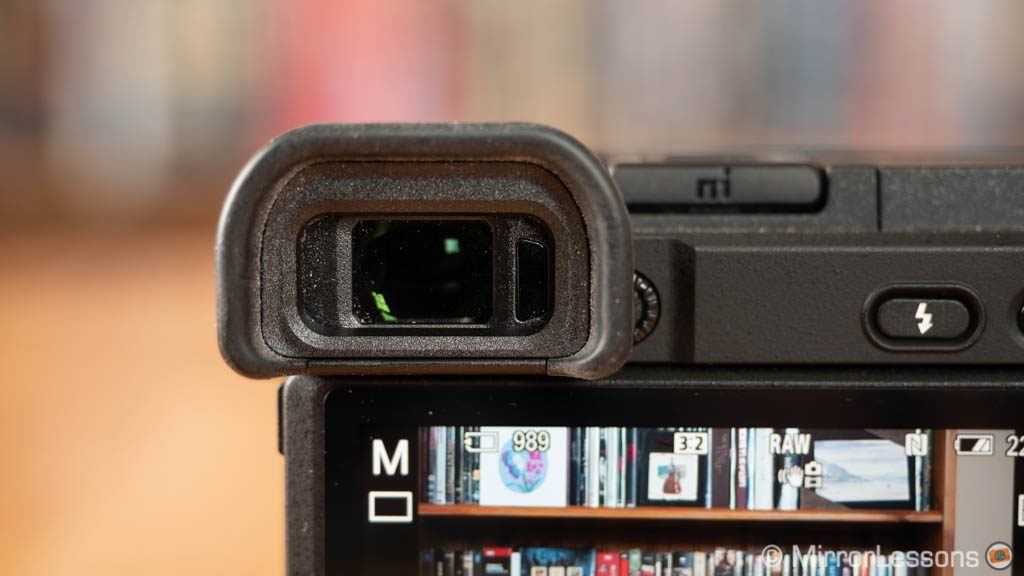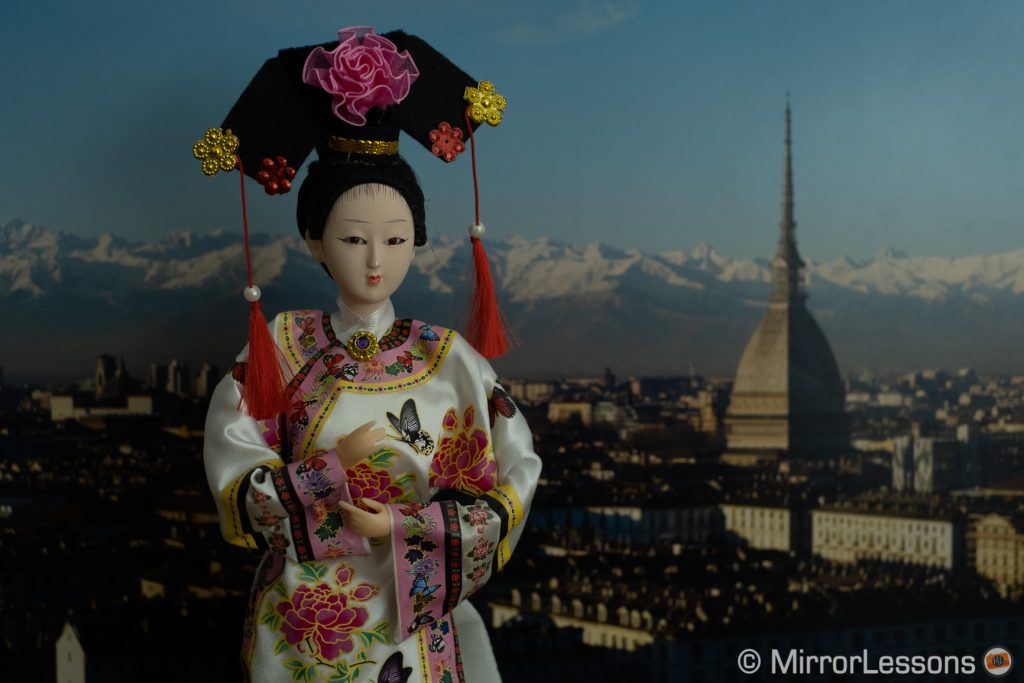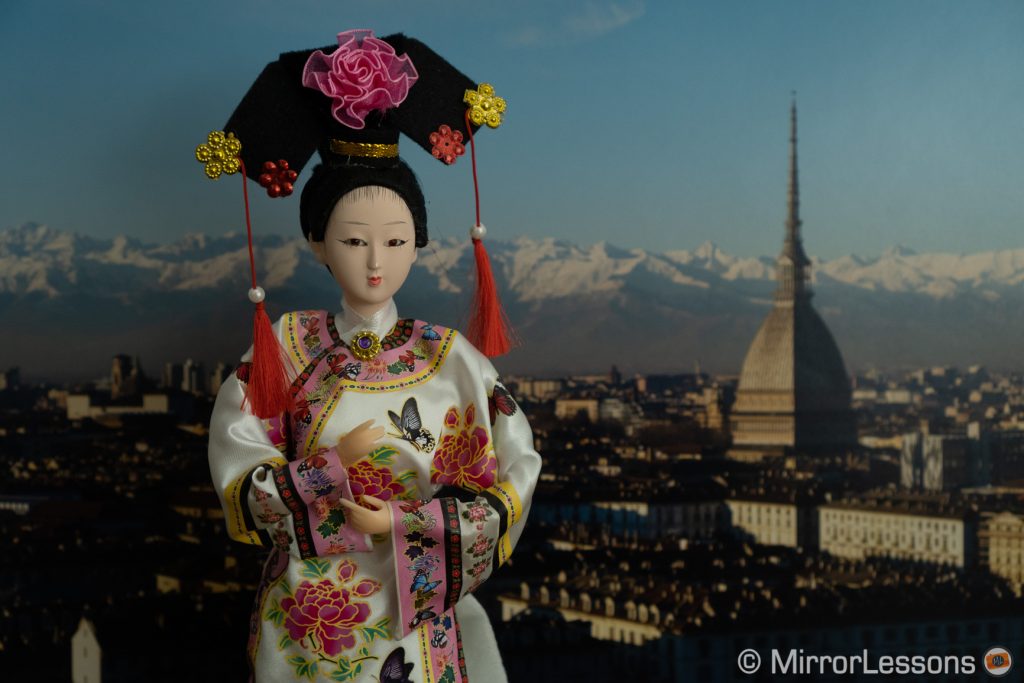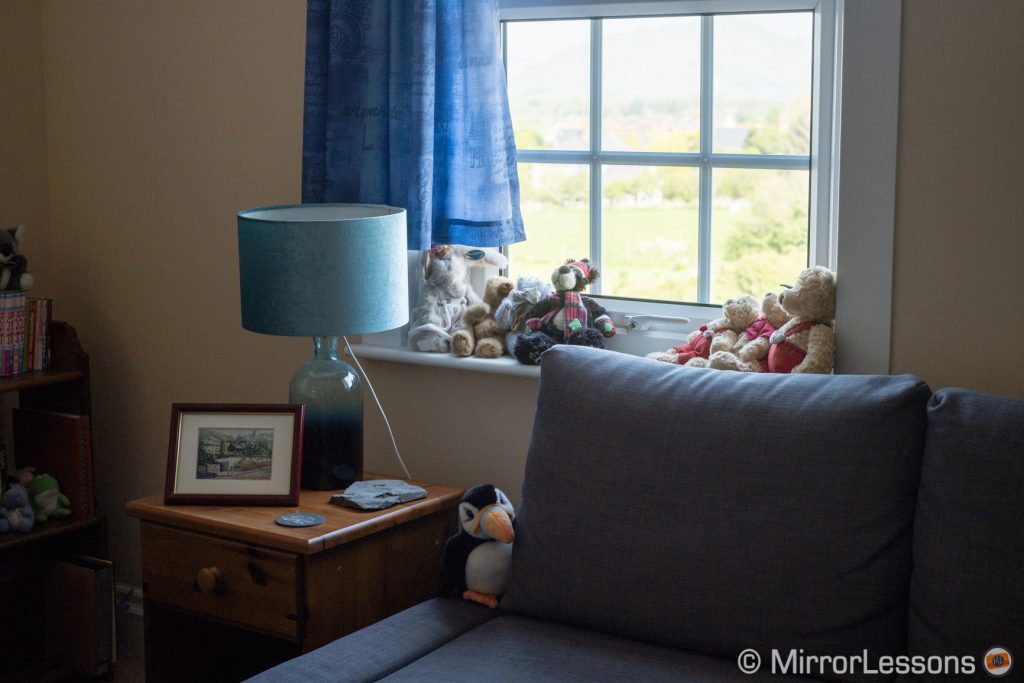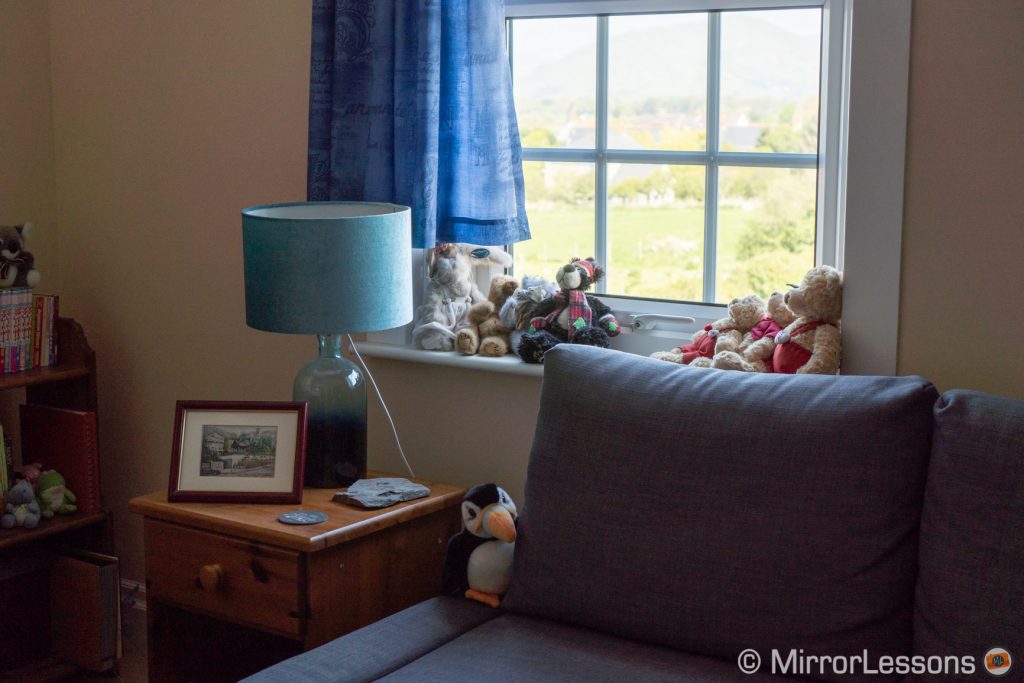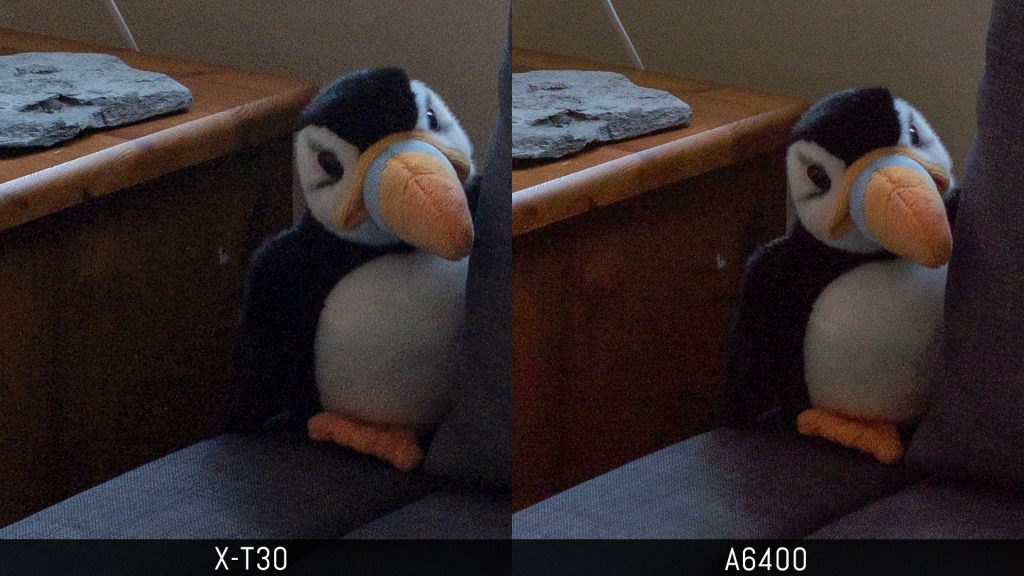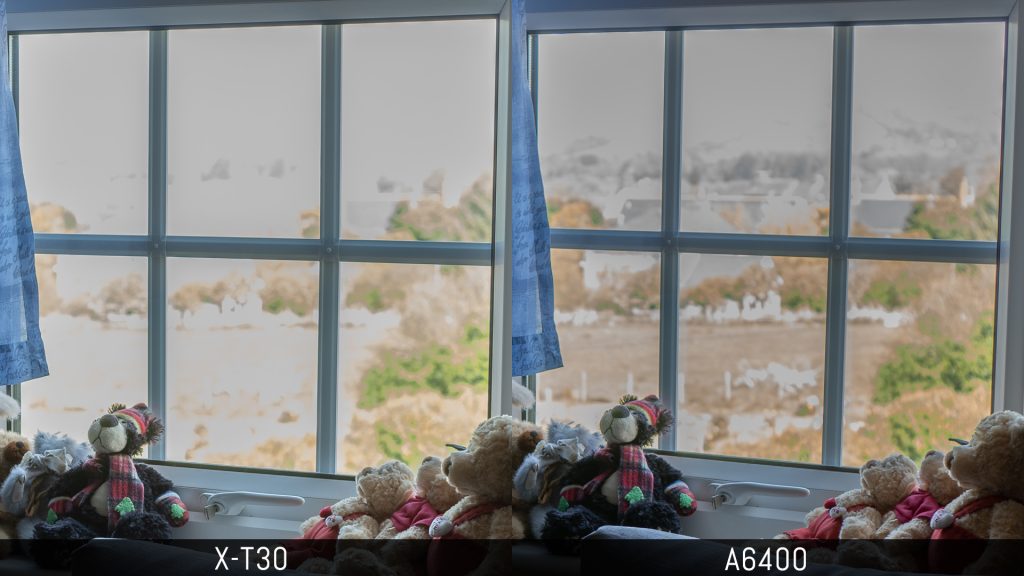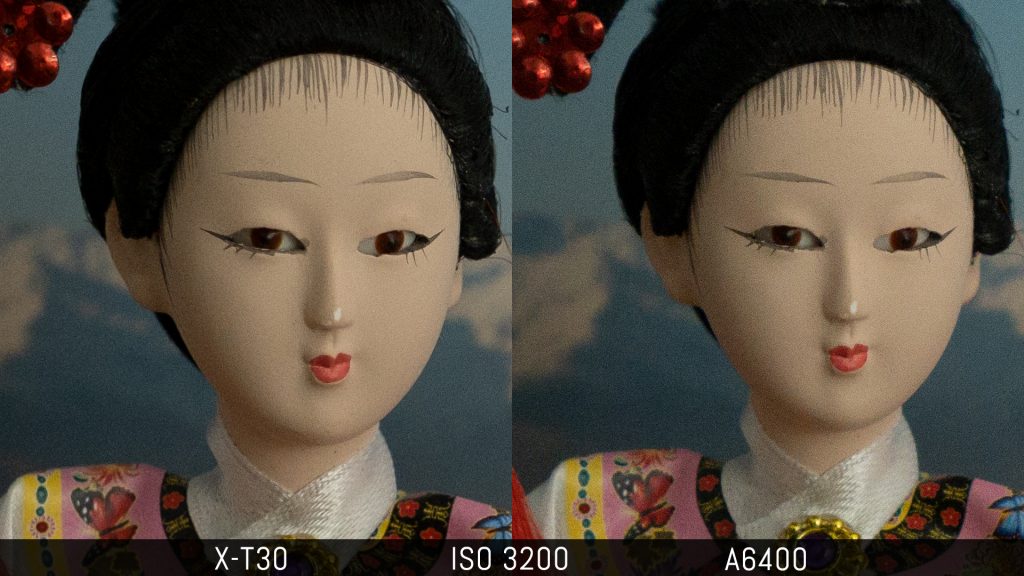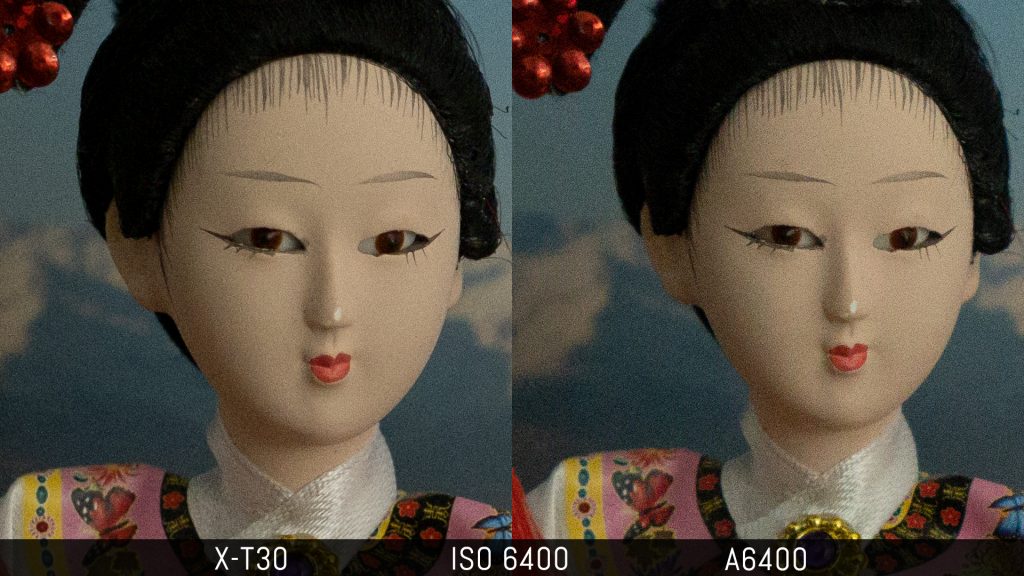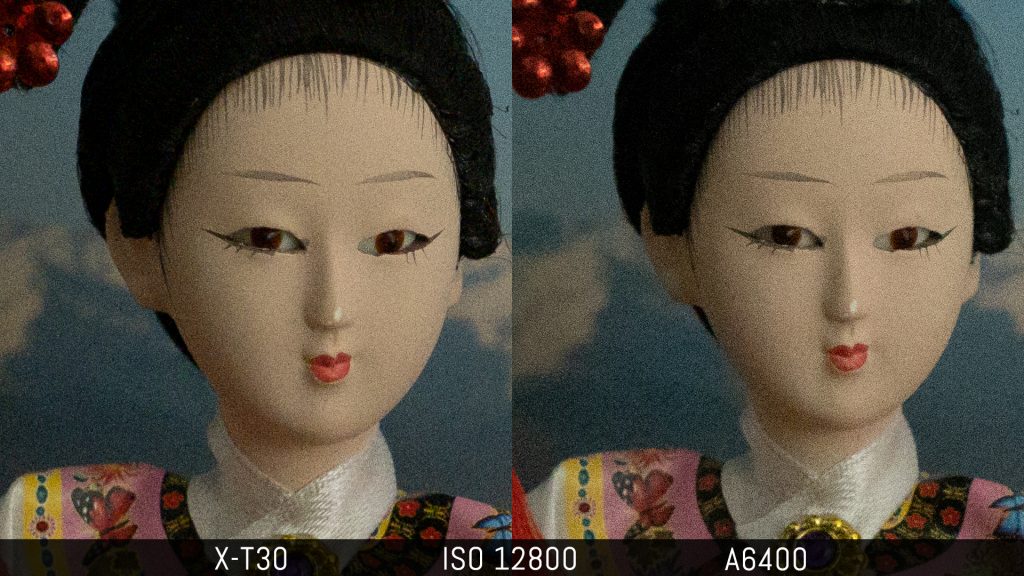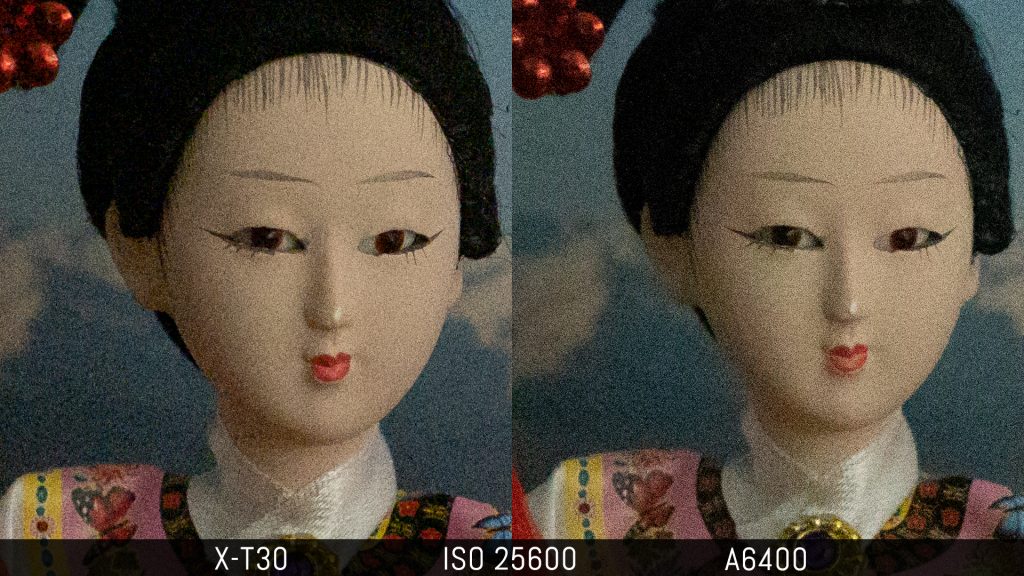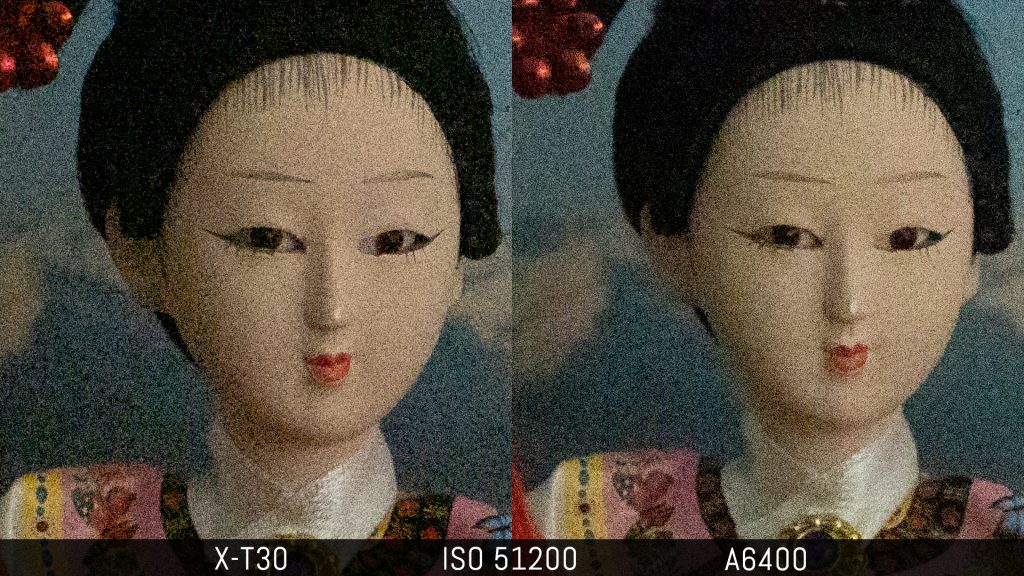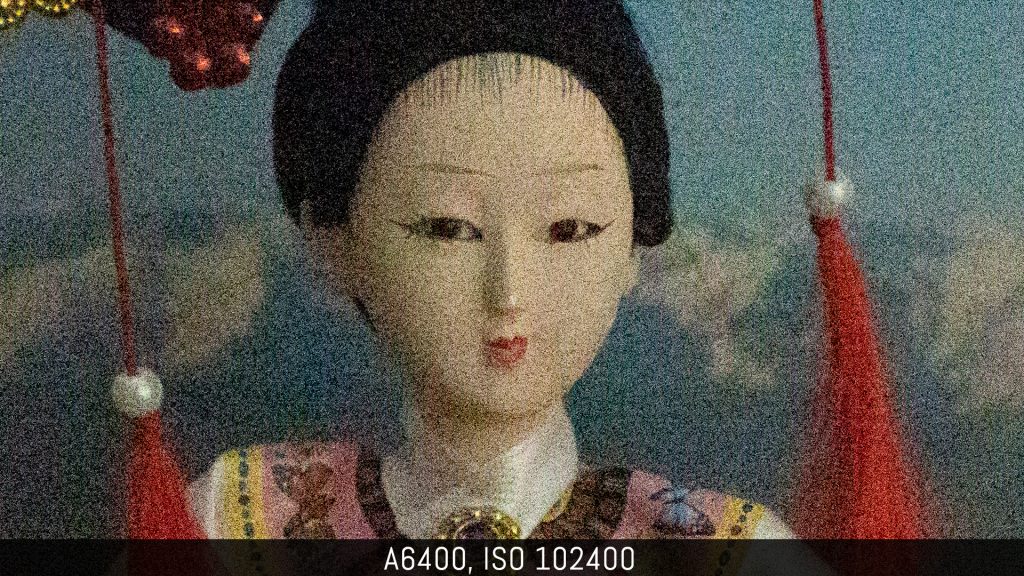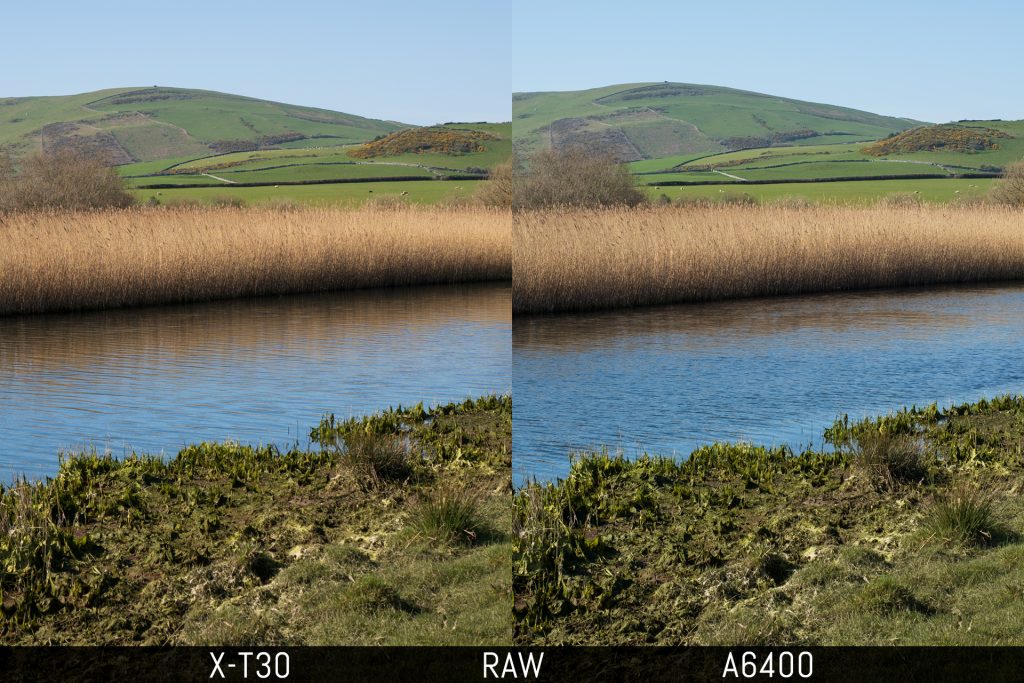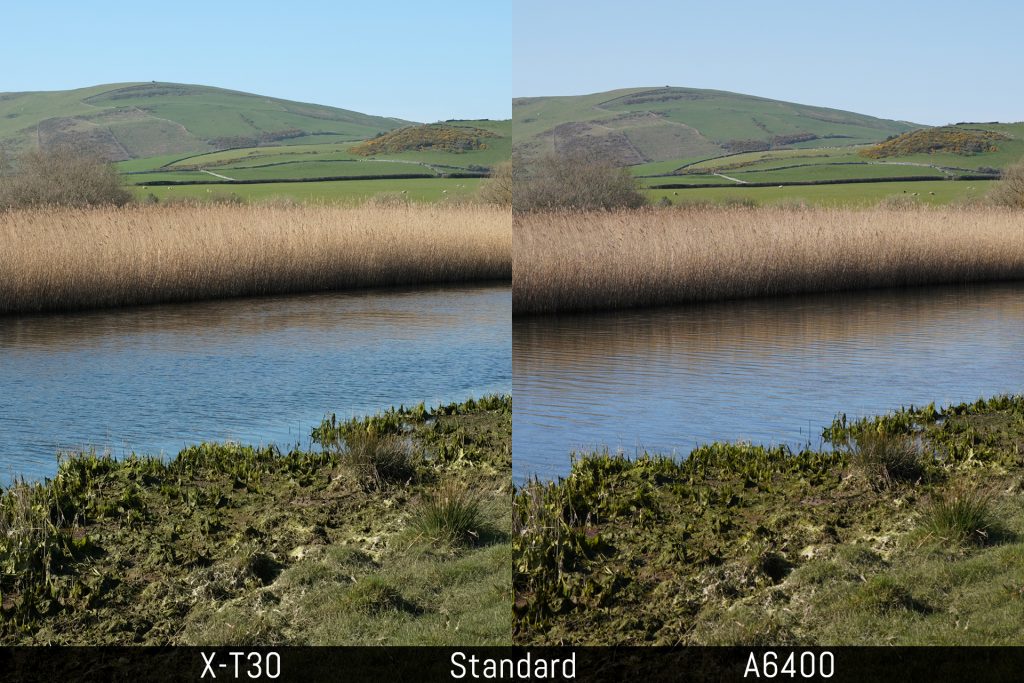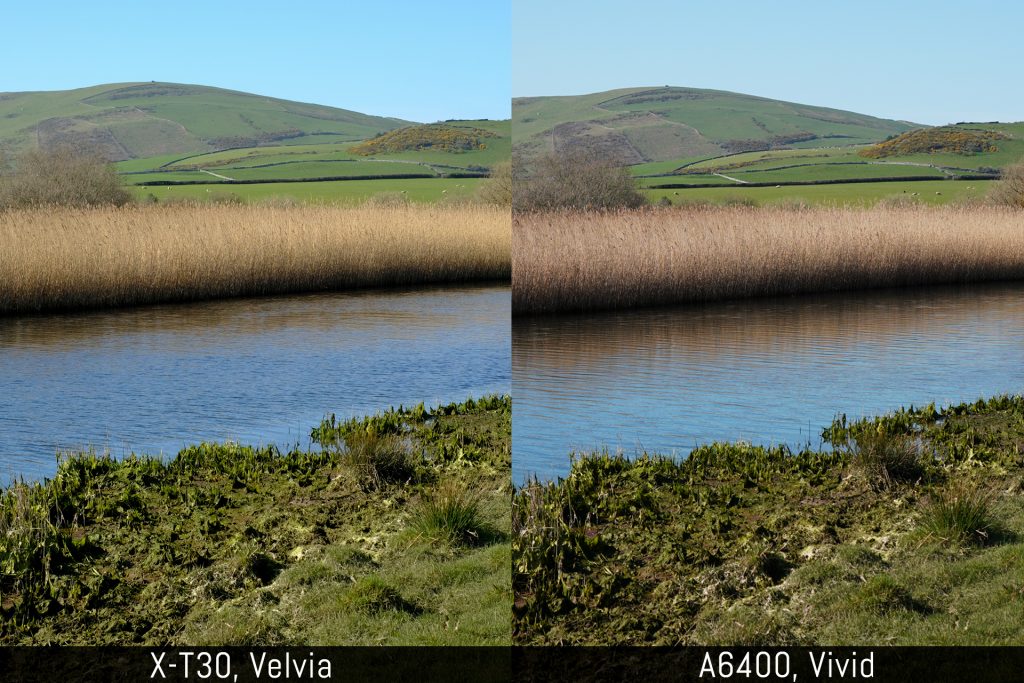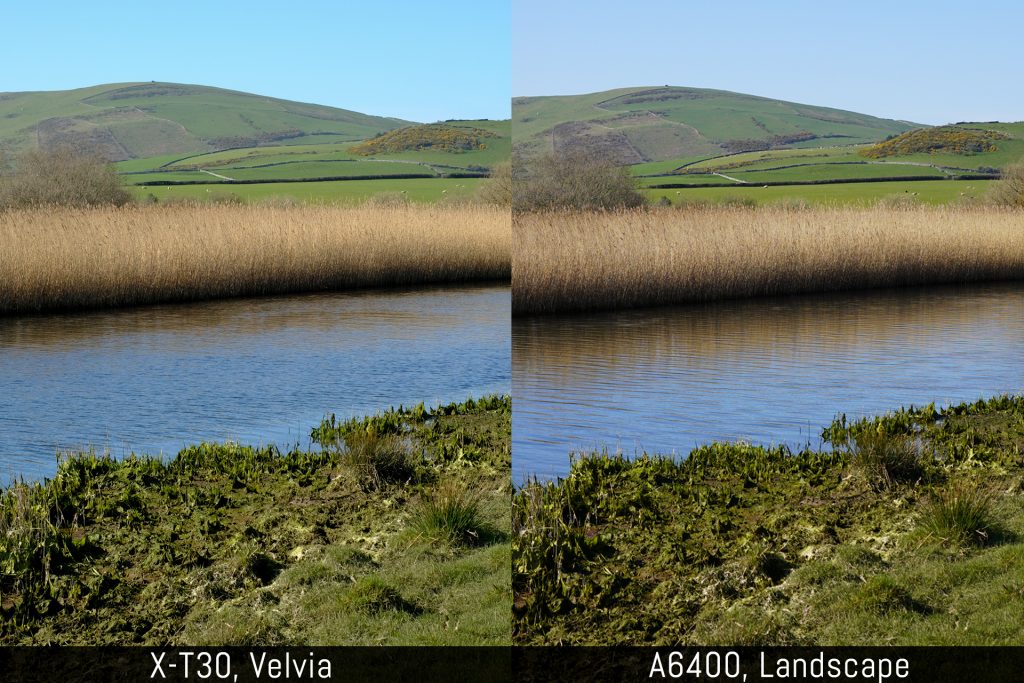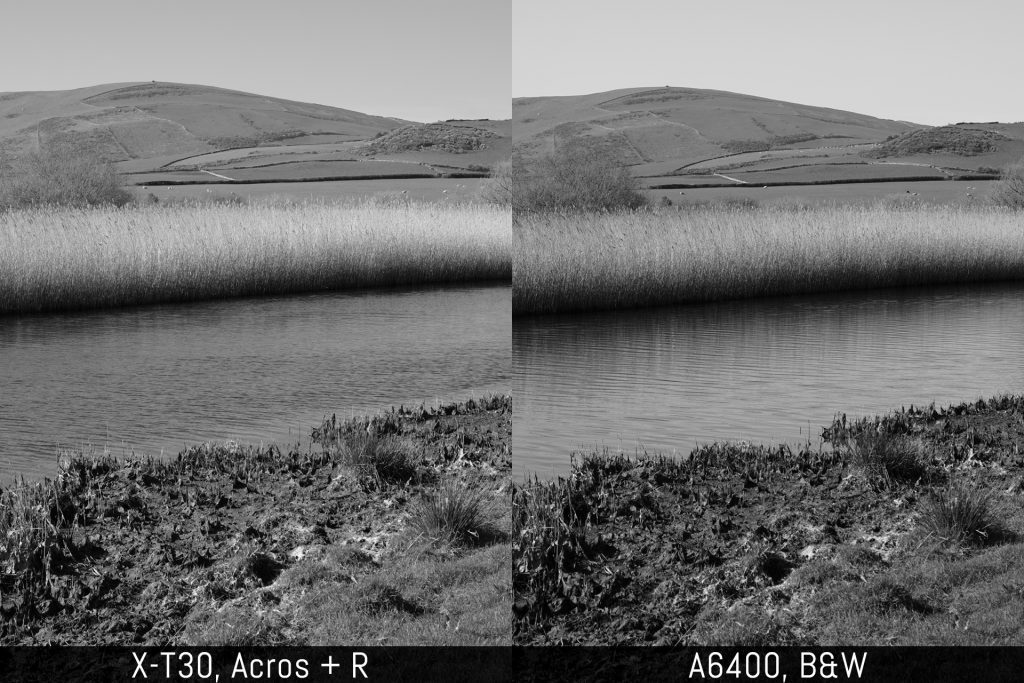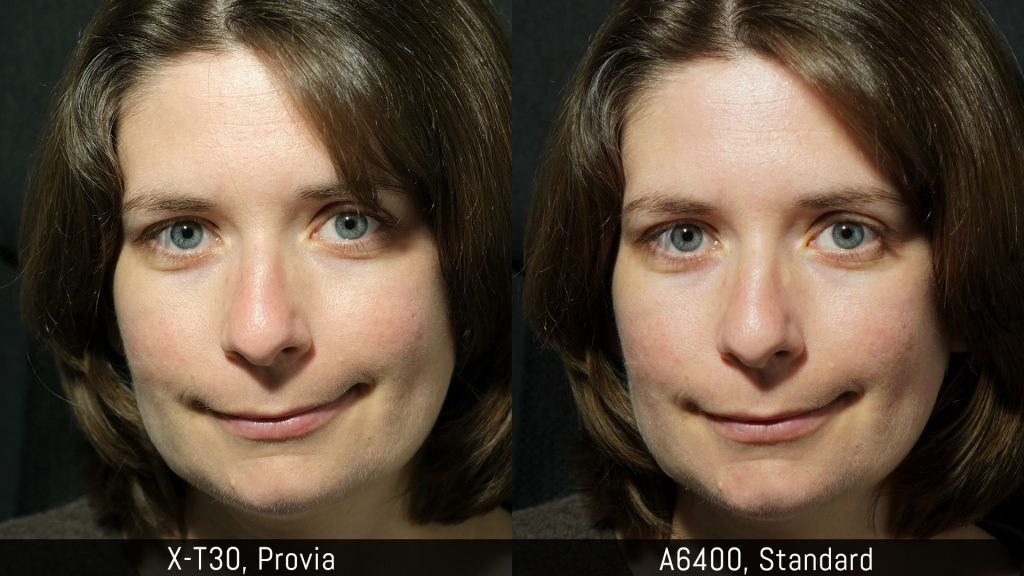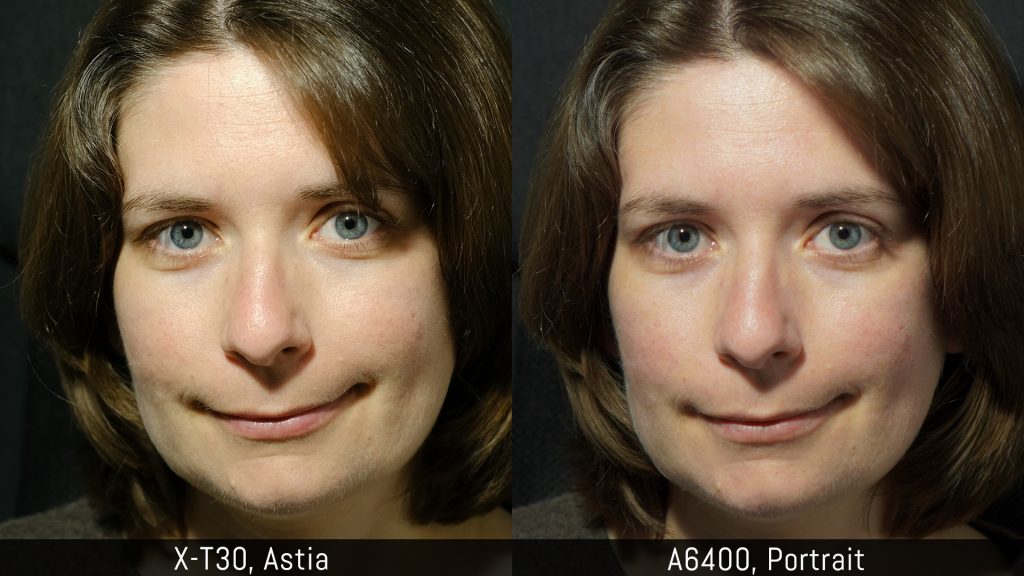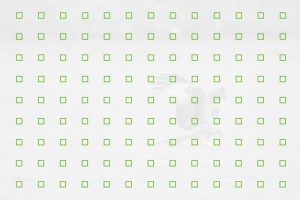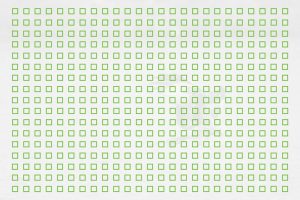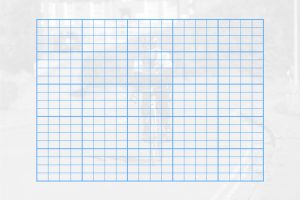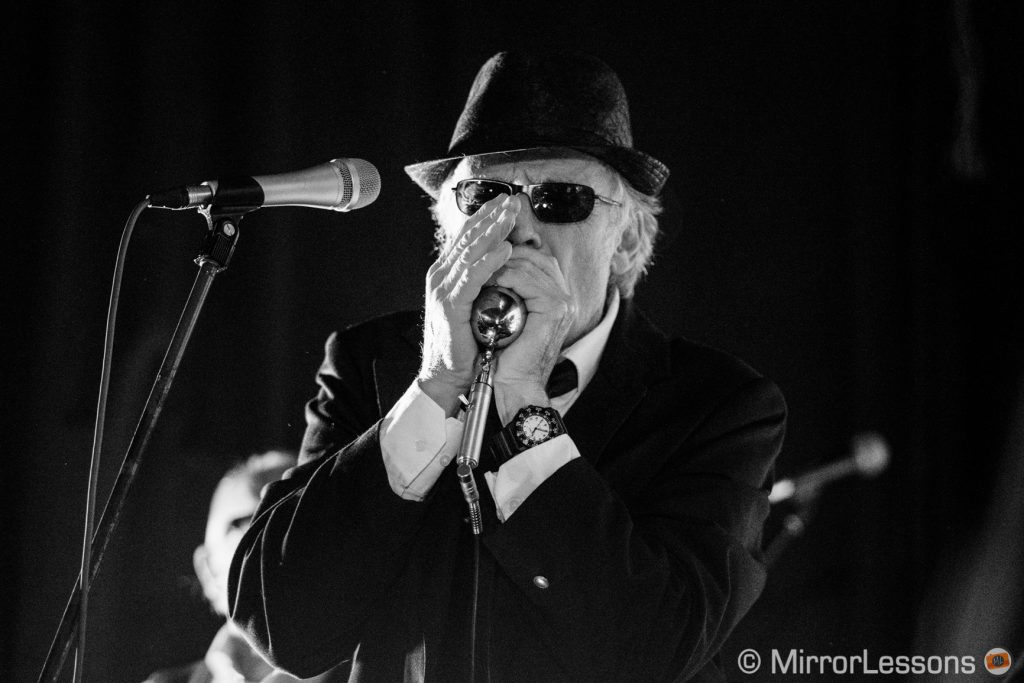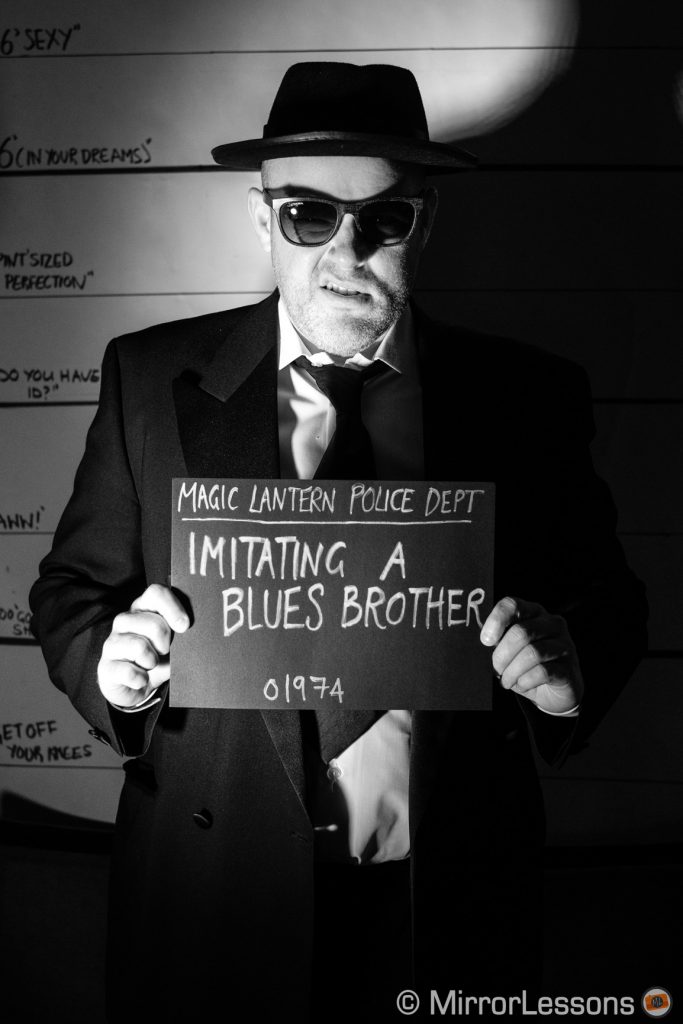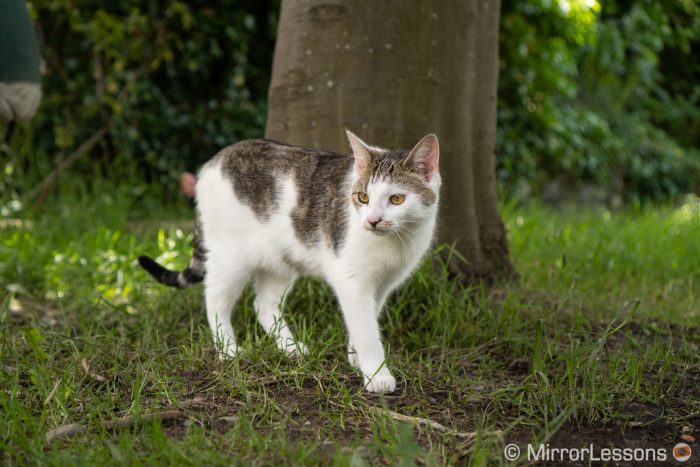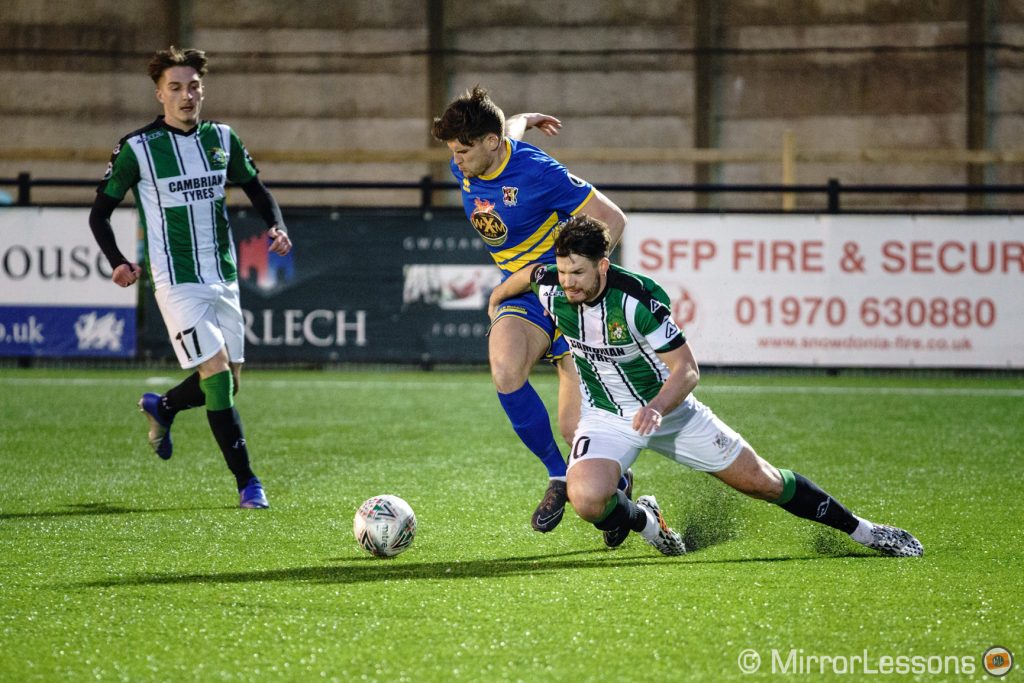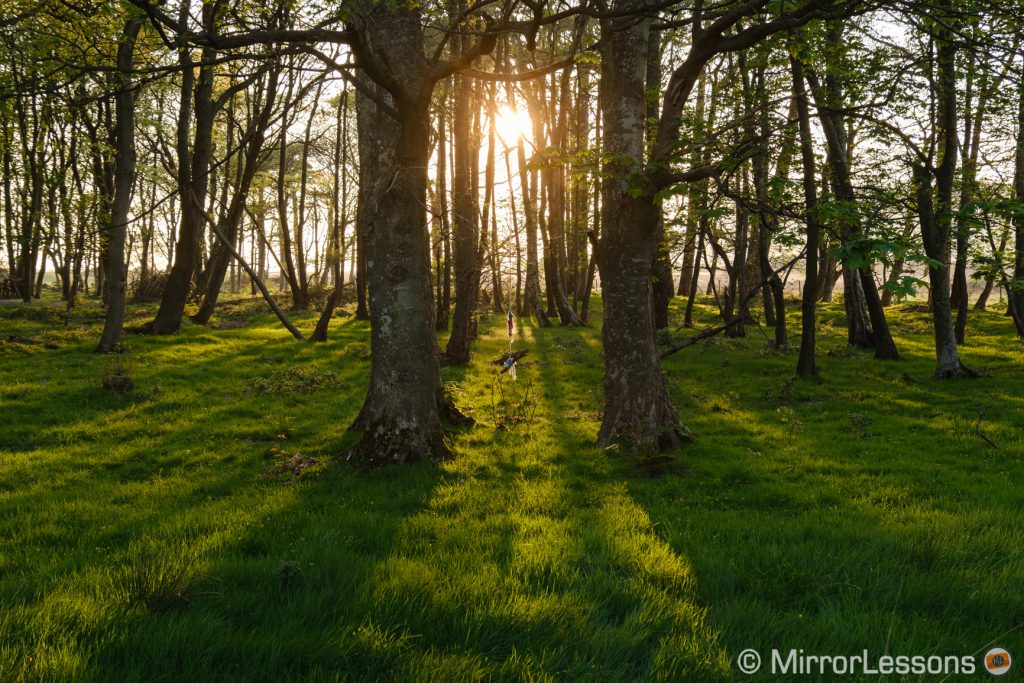Since the departure of Samsung, and excluding Canon who never really attempted to compete at the same level with the EOS M series, it is safe to say that Fujifilm and Sony are the two main players in the mirrorless APS-C segment.
Both companies have produced a complete system of very capable cameras, but whereas Sony is known for pushing technology to its absolute limits, Fujifilm’s appeal continues to lie in the traditional appearance of its products.
The X-T30 and a6400 are the latest examples of this evolving segment. Although for the most part they are based on the models that came before them, they represent a good balance between quality and price, making them two of the most interesting bargains you can find today.
I’m sure that many of you are wondering which one to choose, so we produced this extensive comparison to give you all the most important answers. Enjoy!
Note: Fujifilm has released the X-T30 II in September 2021. The body and hardware are identical to the original X-T30 (except for the higher resolution of the LCD screen), but it includes the latest software updates seen in the X-T4 flagship camera. To find out more about the differences, check our X-T30 vs X-T30 II comparison.
Ethics statement: We purchased the X-T30 and a6400 to conduct our tests. We were not asked to write anything about these products, nor were we provided any compensation of any kind. Within the article, there are affiliate links. If you buy something after clicking one of these links, we will receive a small commission. To know more about our ethics, you can visit our full disclosure page. Thank you!
Table of Contents
Article updates
Main Specs
1. Design and functionality
2. Image quality
3. Autofocus and speed
4. Video capabilities
5. Extra features
Conclusion: X-T30 vs a6400, which one to choose?
Gear used and additional links
Article updates
- June 2019: added feedback about firmware 2.0 that enables Eye AF for animals on the a6400. You can also read our report about this technology here.
Main Specs
X-T30
- Sensor: 26.1 MP APS-C X-Trans IV CMOS
- Lens system: X-mount
- Weatherproof: None
- Internal Stabilisation: None
- Autofocus: Hybrid with up to 425 points (13×9 and 25×17 grids selectable)
- Continuous shooting: 8 fps and 5 fps, up to 20fps with electronic shutter, up to 30fps in crop mode (AF-S and AF-C)
- ISO Sensitivity: 160 – 12800 ISO (pull 80, push 25600 to 51200)
- Shutter Speeds: 1/4000s to 15min, Bulb up to 60min, 1/32000s with electronic shutter
- Viewfinder: 0.39in OLED with 2,360k dots, 17.5mm eyepoint, 0.62x magnification and 100fps refresh rate
- Rear monitor: 2-ways tilting 3″ LCD (1.04M dots) with touch sensitivity
- Movie recording: 4K up to 30fps, Full HD up to 120fps, F-Log
- Built-in Flash: Yes
- Extra Features: WiFi, Bluetooth, Panorama, Timelapse, Bracketing, Multiple exposure, Tethering
- Dimensions: 118.4 x 82.8 x 46.8mm
- Weight: 383g (including battery and memory card)
- Firmware version: 1.10
a6400
- Sensor: 24.2MP APS-C Exmor CMOS
- Lens system: E-mount
- Weatherproof: Yes (dust and moisture)
- Internal Stabilisation: No
- Autofocus: Hybrid with 425 phase and contrast detection points
- Continuous shooting: 3fps to 11fps with AE/AF Tracking
- ISO Sensitivity: 100 – 32000 ISO (push up to 102400)
- Shutter Speeds: 1/4000s to 30s, Bulb
- Viewfinder: 0.39in OLED with 2,360k dots, 21mm eye point, 0.70x magnification and 120fps refresh rate
- Rear monitor: 180˚ Tilting 3″ LCD (922k dots) with touch sensitivity
- Movie recording: 4K up to 30fps, Full HD up to 120fps, S-Log, HDR
- Built-in Flash: Yes
- Extra Features: WiFi, Bluetooth, Interval shooting, Bracketing, Tethering
- Dimensions: 120 x 66.9 x 49.9mm
- Weight: 403g (including battery and memory card)
- Firmware version: 2.00
1. Design and functionality
The X-T30 and a6400 follow on from the success of their predecessors and neither Fujifilm nor Sony changed a lot about the design.
The good old concept of mirrorless: small and lightweight
The X-T30 is the lighter of the two and you’ll be surprised by how compact it is when you hold one. The a6400 is very close though, weighing just 20g more. It is a bit larger but shorter because the EVF doesn’t protrude from the top plate.
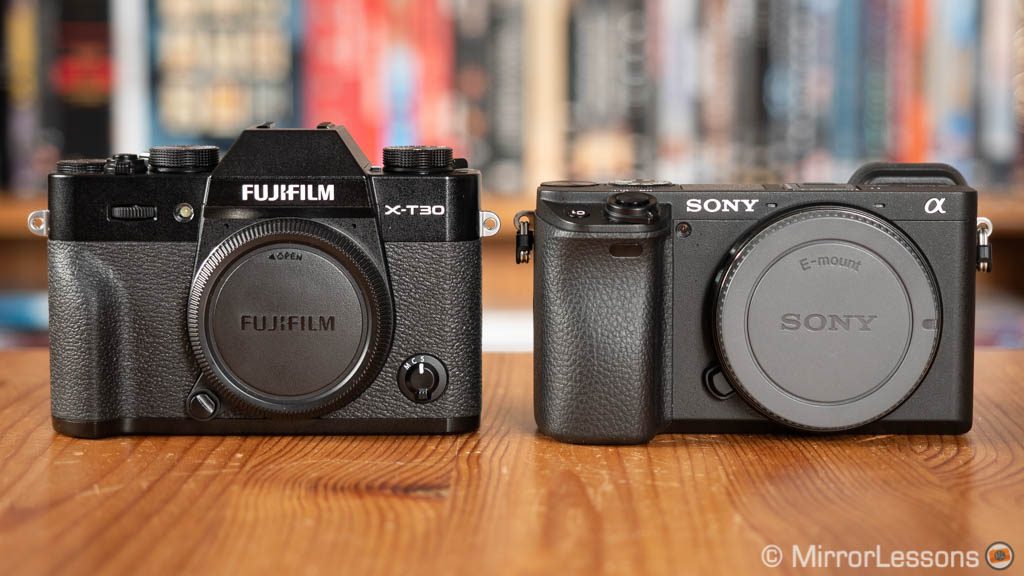
a6400: 120 x 66.9 x 49.9mm, 403g (including battery and memory card)
The Fuji model is available in three colours: black, silver and the new charcoal shade which is very nice. The a6400 can only be purchased in black.

The main advantage of the Sony is the front grip. It is larger and makes the camera easier to handle for someone like me who has large hands. The X-T30 is fine with small lenses, but an optional thumb or landscape grip can be a good accessory to add to your list. (Check our accessory list to find out more.)
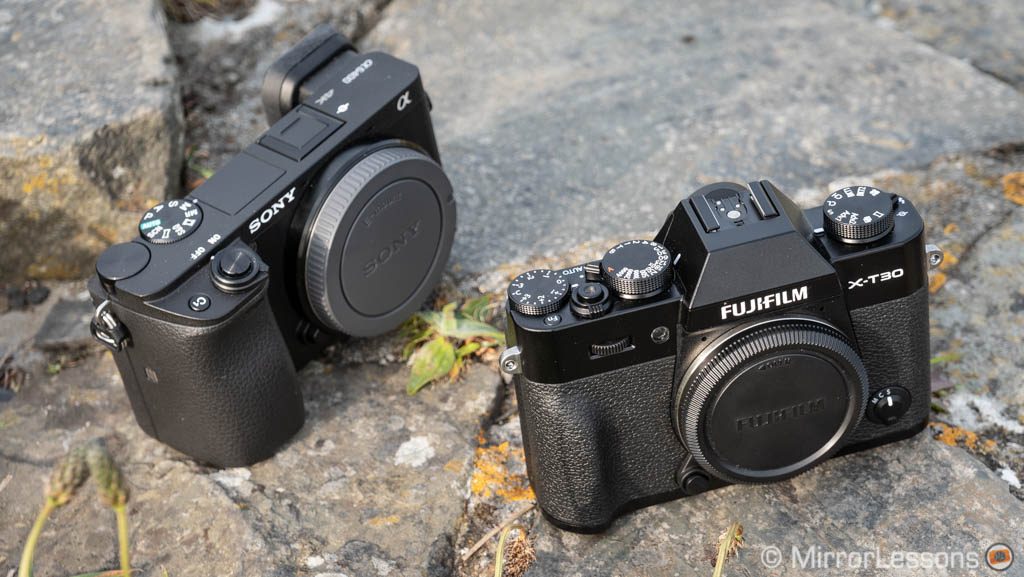
The a6400 features a more robust construction. The body, as well as the top and front plates, are made of magnesium alloy and the camera is protected against dust and moisture. The two dials on top are made of metal, whereas most of the other controls are plastic.
The X-T30 lacks weather sealing and features metal top and bottom plates. The three dials on top are metal as well, whereas other controls such as the front and rear command dials are made of plastic and feel a bit cheap.
One thing I can criticise on the X-T30 is the tripod socket, which is not centred with the lens axis and even more annoyingly, blocks the battery compartment once the plate is attached. Three generations of this camera and this still has not been fixed. The Sony solution is how it is supposed to be.

A few misplaced controls detract from the user experience
The X-T30 is more straightforward to use thanks to the three dials on top that control drive, shutter speed and exposure compensation. There is a handy focus mode selector on the front, two command dials, and an AF Joystick on the rear, which also serves to navigate the menu.

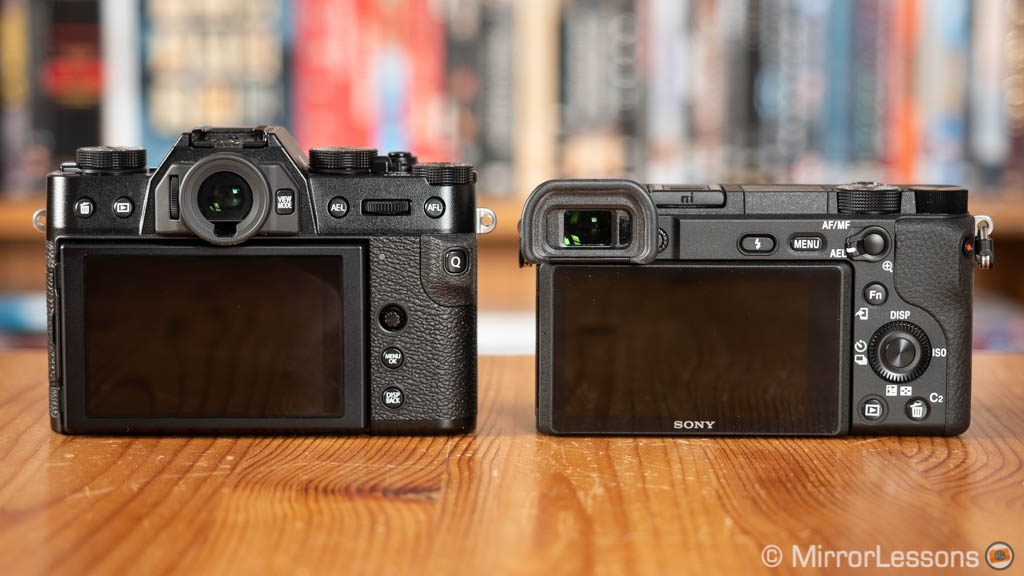
Although I prefer the traditional 4-way pad for the menu, I understand that opting for the joystick cleared some space on the rear panel. Unfortunately the joystick isn’t always precise, especially when pushing it to confirm an operation, and doesn’t feel like the most robust control on the camera.
The various buttons on the Fuji model are small but easy enough to reach. Some of them such as the Fn button on top give you very little tactile feedback however.
Then we have the Q button which is located at the edge of the thumb rest and I’ve lost count of how many times I pressed it accidentally. Fuji has released firmware 1.01 to increase the button’s reaction time but honestly it is as bad as before. It’s a shame because it can take away from the pleasure of using the camera. (Note that Heather had less of an issue with the Q button but once again that may be because she has much smaller hands than I do.)
The a6400 isn’t perfect either. The movie recording button is in an odd position and the rear wheel moves too freely and impedes your ability to change settings quickly and precisely. Both these things get on my nerves from time to time.
The Sony allows for a good amount of customisation. There are three memory recall modes (plus four that can be saved on the memory card) to quickly activate your favourite settings. The Fn menu has 12 slots that can be customised, there are 8 custom buttons, a My Menu page and the dial/rear wheel can also be customised. If you’re not familiar with the Sony interface, personalising the camera will take some time but it is essential to make it more intuitive.
The X-T30 has four function buttons plus four touch gestures on the LCD screen. The Q menu can be personalised (16 slots available) and there is a My Menu page as well where you can save your favourite settings (although some such as formatting the memory card can’t be added for some reason). The main menu is also better organised.
To V-Log or not to V-Log?
If you are into selfies or V-logging, the a6400 offers a big advantage: the LCD screen can be tilted up 180˚. If you need to mount some accessories like a microphone, you will have to buy a hot-shoe relocation plate or a similar rig to keep the screen view clear.
The X-T30 has a traditional two-way tilting screen: it can go up by approximately 95˚ and down around 45˚.
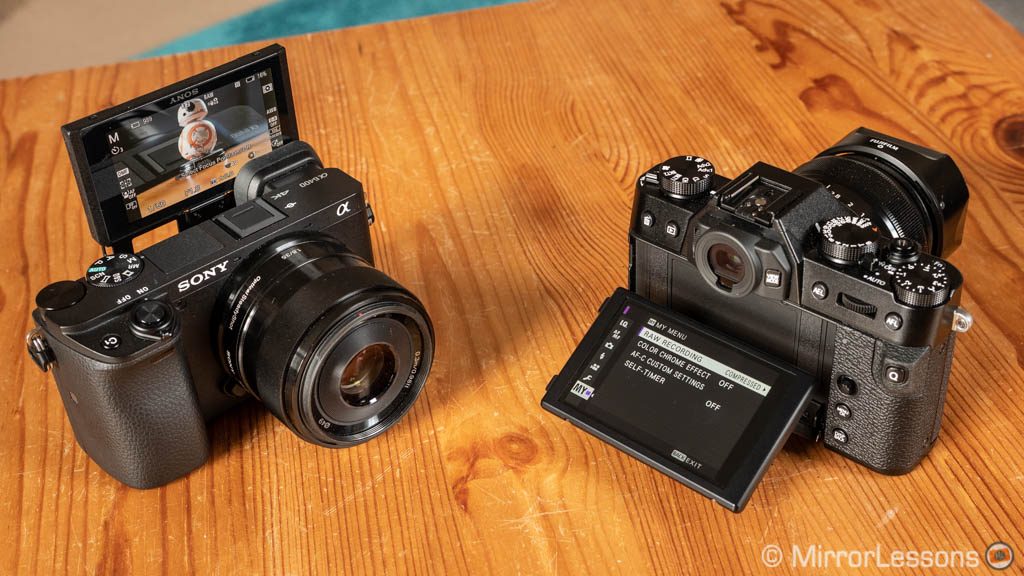
Both screens are touch sensitive. The one on the Fuji camera is very responsive and allows you to perform a number of operations including moving the focus point (even when using the EVF), taking a shot and changing settings in the Q menu. You can also enable double tap to magnify which is very useful.
If you flick from the left, right, top or bottom side of the monitor, you can trigger four different functions that can be customised in the menu. The only thing I noticed is that the camera takes some time to focus once you selected the focus point. I wish it were a tad more reactive.
The a6400 touch capabilities are limited to swiping through your images in playback mode, taking a shot and selecting a focus point. The last action can be done while composing with the viewfinder and you can specify which portion of the rear screen remains active so that you don’t touch it inadvertently with your nose. The reactivity is very good and you can also use the touch screen to start tracking a subject.
Both cameras feature a 0.39in OLED panel with 2.36 million dots. The refresh rate is similar (up to 100Hz), with the a6400 being able to go up to 120Hz if you work in NTSC mode.
The viewfinder position marks another big difference in design. The X-T30’s is at the centre, mimicking old SLRs, whereas the a6400 has it positioned on the left in a rangefinder-like style.
The advantage of having the EVF on the left is that it allows you to compose while keeping the other eye open. Unfortunately I use my left eye so I can’t take advantage of the Sony solution.
The magnification is slightly higher on the Sony (0.70x vs 0.62x) and the eye point is longer (21mm vs 17.5mm) which makes the a6400 a bit easier to compose with if you wear glasses. The X-T30 could do with a soft eyecup as well.
Additional info about design and functionality
- Memory cards: one SD slot each found at the bottom inside the battery compartment (UHS-I)
- Connections: both have HDMI Type D (micro). The Sony has a 3.5mm mic input and a USB / Multi Terminal port. The X-T30 has a 2.5mm mic/remote input and a USB Type C socket.
- Battery life: sufficient on both cameras, a bit better on the Fuji, but video recording will drain it quickly.
2. Image quality
The X-T30 and a6400 feature an APS-C sensor and the resolution is close (26.1MP for the Fujifilm, 24.2MP for the Sony). The design of the two chips is different however.
The X-T30 has a BSI (back-illuminated) structure, no low-pass filter and a different distribution of pixels that ensures the presence of at least one red, blue and green channel on every line. This specific design is called X-Trans. The a6400 uses a standard Bayer sensor with an AA filter.
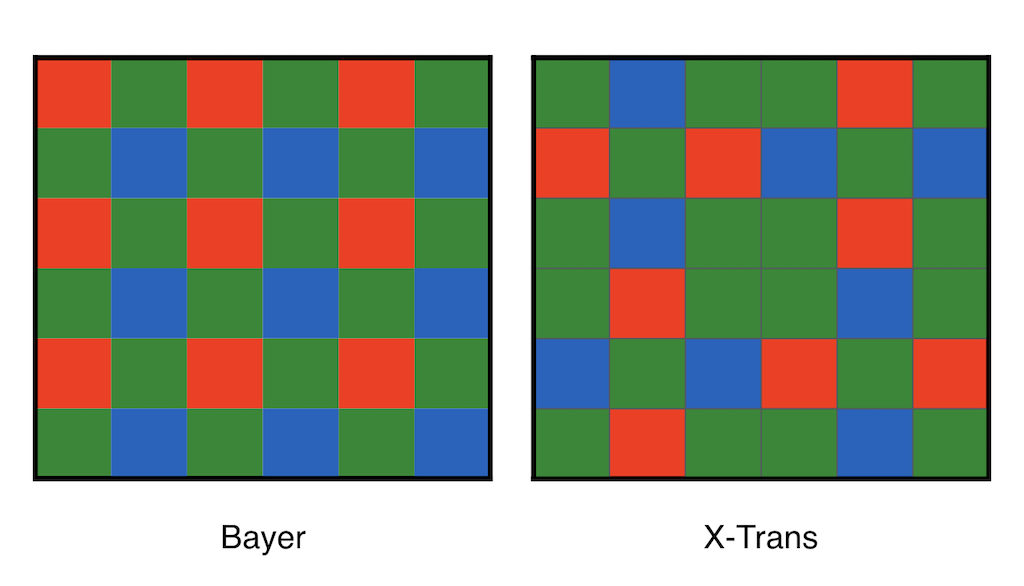
Not all software applications can get the best sharpness out of the Fuji RAW files without displaying some “watercolour” artefacts. This has long been a known limitation of the Adobe Camera RAW processor in particular but the recent Enhanced Details mode introduced in Lightroom Classic CC has minimised the problem. There are also other valid applications such as Capture One and Iridient Developer.
Another thing to mention is that with the same exposure settings (aperture, shutter speed and ISO sensitivity), the X-T30 image is darker than the a6400 by approximately 1/3 of a full stop.
I’ve come across this discrepancy in all my Sony vs Fuji comparisons. This is apparently due to the different ISO standard chosen by the two brands (REI for Sony, SOS for Fujifilm).
In this specific case however, the difference is less of an issue (1/3Ev isn’t a big deal really) so rather than showing you more examples with different settings, I adjusted the exposure to have the same brightness on both cameras when taking the side-by-side photos. Just keep in mind that the a6400 is a bit more sensitive by default.
Dynamic range and ISO: a close match
The X-T30 normal range starts from ISO 160 whereas the a6400 begins at ISO 100. Both cameras output 14-bit RAW files but only on the Fuji can you choose between uncompressed or lossless compressed. RAW files on the Sony are compressed.
Our first dynamic range example is an under-exposed shot which lets us see how much detail we can recover in the shadows.
The amount of noise is similar but the a6400 displays more colour noise artefacts. I also needed to apply less noise reduction to the Fuji files.
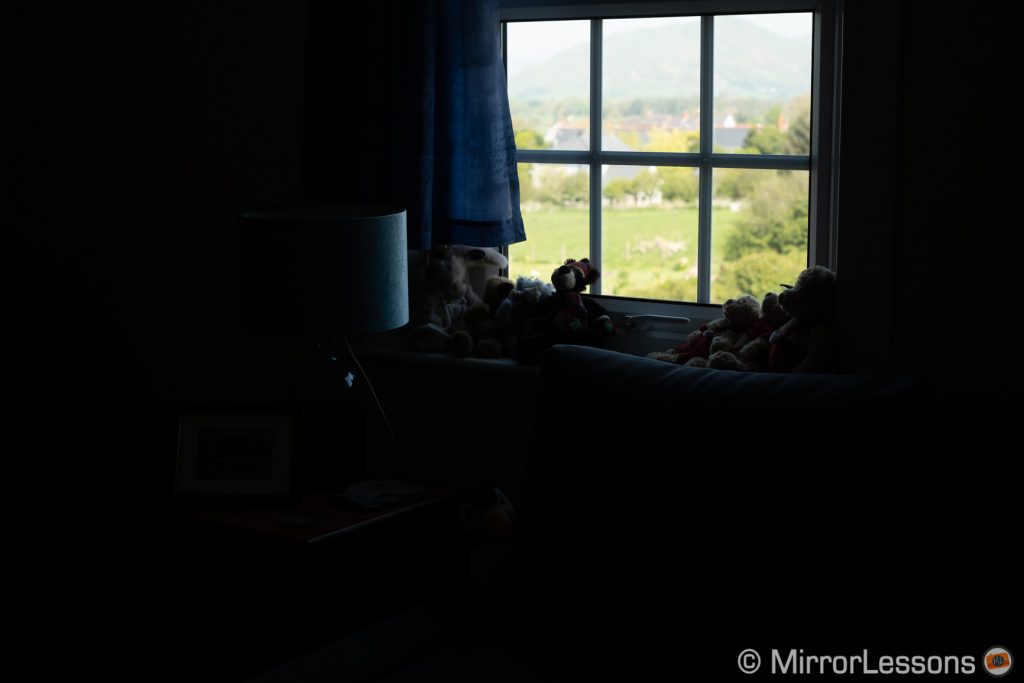
With a less strong recovery (2 or 3 stops), both cameras do equally well. If we look at the highlights however, it is the a6400 that has the upper hand.
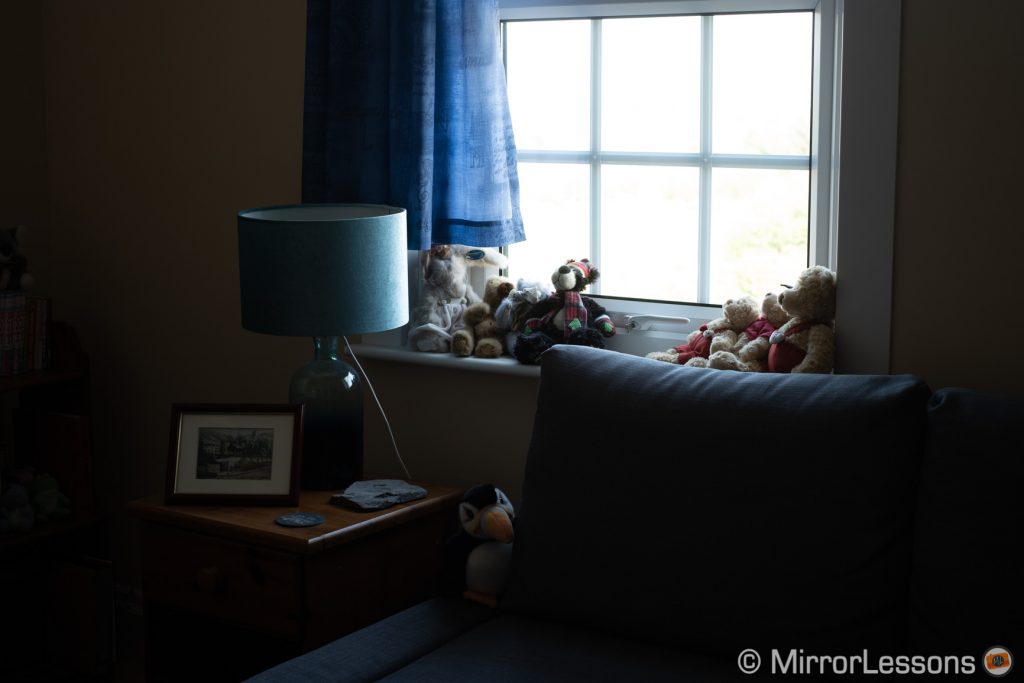
The X-T30 range goes from ISO 160 to 12800, and you can expand these levels down to ISO 80, or up to ISO 51200. The a6400 goes from 100 to 32000 ISO, with push values up to ISO 102400.
Up to 1600 ISO, both cameras perform in the same way and noise is well-contained. From ISO 3200, noise appears a bit more pronounced on the Sony files.
From 25600 ISO the images start to deteriorate. The X-T30 uses its extended values at this point but noise becomes more severe on both cameras, and gets worse at 51200 ISO. Most likely you’ll never bother with the highest level on the a6400.
Picture profiles: two distinctive looks
If I apply the same colour profile, white balance and tint settings to the RAW files, the Sony version is bit warmer than the Fuji, but it only take a few tweaks in post to match them closely. Of course keep in mind that colours can change depending on the software used and the profile it applies by default.
With the JPG files and the profiles you select in-camera, more difference emerge. These settings are called Film Simulations on the X-T30 and Creative Styles on the a6400.
The X-T30 displays more yellow and green whereas the Sony has more of a red dominance. This is especially relevant with the vivid profiles (Velvia in Fuji terms).
The colour palette can change depending on the style selected for the a6400. See for example how the Landscape profile is closer to Velvia.
The X-T30 has 9 film simulation modes that give more or less contrast and saturation. Classic Chrome has a unique colour palette with a bit more red dominance and contrast but less vibrance.
The a6400 has 13 Creative Styles. Some of them change the look of your image significantly. For example Clear increases the contrast, Deep smoothens tones and gradations, whereas Autumn Leaves give your image a nice balance of colours and saturation.
If you like monochrome, the X-T30 offers two sets of Black and White profiles and one Sepia mode. You can apply different colour filter effects to Monochrome and Acros, in addition to being able to cool or warm the tone. The a6400 only has one Black and White style.
With portraits, the Fuji adds a yellow and green tint to the skin tones, whereas the Sony has more reds. With the portrait profile, the Sony decrease sharpness and smoothens the tone transitions as well.
The greenish look on the X-T30 can be corrected in different ways. You can measure white balance with a grey card or tweak colours with the WB Shift setting.
Additional information about image quality
- JPG settings: the X-T30 has more levels to control noise reduction (±4) whereas you’ll find only three on the a6400 (off, low and normal). The DR settings on the Fuji are more effective if you want to increase shadow and highlight details. The a6400 has an Extra Fine setting.
- Colour chrome effect: exclusive of the X-T30, it produces deeper colours and gradations (JPG only)
- Auto White Balance: the X-T30 can easily assume a red or green dominance under certain artificial lights. The a6400 has additional settings to prioritise white or ambient colours.
- Metering: the X-T30 has four options: Multi, Centre, Spot and Average. The a6400 has six settings including Multi, Centre, Spot (Standard and Large), Entire Screen Average and Highlight. With the standard settings, the Sony tends to meter higher than the Fuji. Spot metering can be linked to the AF point on both cameras.
3. Autofocus and speed
The X-T30 inherits the same AF system as the flagship X-T3 which is the most advanced Fujifilm has produced to date. The a6400 is based on its two predecessors but with some important algorithm updates.
Two advanced hybrid AF
The X-T30 has 117 hybrid areas (phase and contrast detection) that can be subdivided into 425 points when the single mode is selected. The a6400 uses 425 phase and contrast detection points.
With both cameras, phase detection points cover more than 90% of the sensor surface (99% on the Fuji!). The X-T30 has a small advantage in low light as the minimum sensitivity is measured at -3Ev vs -2Ev on the a6400 (with an f2 aperture).
With single autofocus, the X-T30 is very reliable and gives new life to older lenses that have a slow stepping motor. My XF 35mm 1.4 focuses much quicker than before. With faster lenses, the performance is seamless.
The a6400 is also fast and reliable although – like many other Sony cameras – tends to prioritise contrast detection when working in S-AF. This makes the camera a tad slower and the classic back and forth movements of the lens are visible in the live view. If you choose large focus areas such as Wide or Zone, the camera prioritises phase detection points.
Face and eye detection: Sony still leads but Fujifilm is catching up
The X-T30 marks a good step forward in terms of face and eye detection performance. The camera can detect smaller subjects in the frame and in this regard it does better than the Sony, which means it starts tracking sooner when a subject is approaching. With multiple faces, you can choose which one to prioritise with the touch screen or via a function button and the AF joystick.
Focus accuracy is good but tricky light conditions and lots of contrast can confuse the camera. At times it was able to recognise a face wearing black sunglasses even when the person was turned to the side, whereas other times it failed to see any, or it detected a face where there wasn’t one. So while the overall performance has greatly improved, the occasional odd behaviour is still present.
The a6400 recognises faces without any issue and rarely gets confused so that’s definitely a bonus. Unlike the Fuji though, there is no easy way to tell the camera which face to prioritise unless you register it first (you have to take a shot of the person and register it in the camera’s database).
I find eye detection more reliable on the Sony and I can’t recall a single time where it had trouble locking onto the eye of the person, even when working in low light situation. Focus accuracy is pretty good too.
Both cameras can prioritise the left or right eye which is quite helpful for portraits. Unfortunately the X-T30 doesn’t allow you to quickly switch between the left or right eye with the press of a button; you always need to bring up the dedicated menu setting and change it from there. On the A6400, you can assign this specific option to a custom button to switch between left, right or auto.
Face and eye detection work in real time (on the Fuji you don’t even need to half press the shutter button). Note that if you have a small focus area selected on the a6400, and that area is not on the person’s face, the camera will prioritise that area when focusing and taking the shot. To avoid this, you need to use Zone or Wide, or assign EyeAF to a function button.
The a6400 Eye AF feature also works with animals thanks to firmware 2.0. It works really well and the camera can recognise a large variety of species. You can read more about it in our dedicated article.
Sports and action: different behaviour, same result
We took the X-T30 and a6400 to a football game in Aberystwyth – a regular part of our autofocus tests. Football is a great testing ground because it mixes fast-moving subjects, quick action and crowded scenes, giving us the opportunity to test all the settings and see how the cameras react in different situations.
That evening proved an interesting one. If I were to analyse our entire experience with the cameras, I would give the prize to the Sony. Not only is the locking speed impressive (0.02s according to the official specs which is the fastest in its category) but the way in which the camera knows how to place the right number of phase detection points on the subject is almost art.
The new real time tracking algorithm (the camera analyses colours, patterns, distance, face and eyes) is impressive. It locks onto the subject with the same speed and rarely loses it or confuses it with something else. It is the most impressive tracking feature I have ever seen on a mirrorless camera.
The Fuji feels a bit slower and can’t work with as many areas as the Sony when you select Zone AF. The Wide/Tracking is not at the same level as the a6400.
However when analysing the photos on the computer and checking focus accuracy, it turns out that the two cameras perform in a very similar manner. The a6400 averaged a keeper rate of 81%, or 97% if I include slightly soft results, but the Fuji was very close (81% and 95%) and at times, it did even better (90%/99%).
The secret with the X-T30 is to select the right settings. On the a6400 you can choose Zone AF or Tracking and not worry about anything else. On the Fuji, a large Zone AF area (7×7 or 5×5) prompted the camera to change focus too frequently, whereas a 3×3 grid was the best choice.
With Wide/Tracking, the X-T30 is less capable of keeping the focus on the subject selected and the keeper rate decreased to around 64%.
Unlike the Sony, you can control the AF responsiveness and speed with the AF-C Custom settings on the X-T30. There are five presets and the sixth set can be customised.
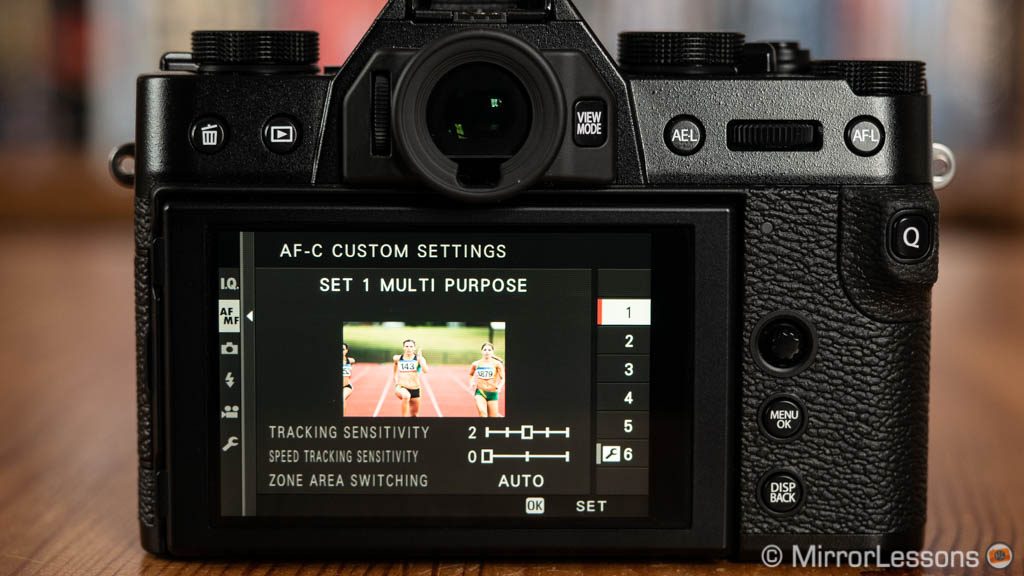
I found Set 1 to behave perfectly for this kind of sport. The camera was fast enough but not reactive to the point that it would change focus when a player momentarily ran in front of the one I was following. In other situations, the wrong preset can alter the performance so it’s always important to choose the most appropriate one.
I didn’t test the Fuji model for birds in flight because using the camera with a large lens such as the 100-400mm becomes very uncomfortable from an ergonomics point of view. Given that it has the same capabilities as the X-T3, I don’t see why it shouldn’t produce the same excellent results. (If you try it, I recommend Set 4 in the AF-C custom settings.)
I brought the a6400 to my favourite red kite feeding ground because I was curious to see if there were any improvements over the a6300 and a6500 listed in our wildlife round-up. It turns out that there are indeed some enhancements, most noticeably the focus accuracy when the bird occupies a smaller area of the frame and is against a busy background. However the keeper rate remains similar to the other two E-mount APS-C models.
Electronic shutter: Fuji goes into Sony territory
With the mechanical shutter, the X-T30 can shoot up to 8fps, or 5fps with live view and blackouts. The a6400 is a bit faster, going up to 11fps or 8fps with live view/blackouts.
If you switch to the electronic shutter, the Fuji takes the lead at 20fps, or 30fps with a 1.25x crop. Furthermore, these bursts are available with live view (40Hz, or 60Hz in crop mode) and no blackouts, which makes tracking an unpredictable subject much easier. I love this feature on the X-T3 when taking pictures of BIF.
Unfortunately the a6400 doesn’t take advantage of its electronic shutter for anything more than silent shooting.
The X-T30 can increase the shutter speed to 1/32000s, which exceeds the 1/4000s maximum speed with the mechanical curtain shared by the two cameras.
The a6400 does better in terms of buffer capabilities. It holds for about 12s with RAW files and never slows down with the JPGs when shooting at 8fps. The X-T30 on the other hand slows down after not even 3 seconds with RAW files, or 13 seconds with JPGs.

Additional information about autofocus and speed
- AF-A: the camera switches between single and continuous AF if the subject starts to move (a6400 only)
- Store AF mode by orientation: you can set different AF areas and focus modes for horizontal and vertical compositions (both cameras)
- AF+MF mode: allows you to fine tune focus after autofocusing (called DMF mode on the a6400)
- Focus Area Limit: you can select how many area modes are displayed in the menu when browsing through them
- Pre-shot: with the electronic shutter and Pre-Shot mode, you can record photos before you fully press the shutter button (X-T30 only)
- Flickr reduction: it minimises the chance of having different exposures between frames when working in burst mode. The speed might decrease however. (both cameras)
- Electronic first curtain: a6400 only
- Rolling shutter: when working with the electronic shutter, distortion when panning quickly or banding under fluorescent lights can be visible in your image. The X-T30 suffers a bit less from distortion, hinting at a faster sensor readout.
4. Video capabilities
The X-T30 and a6400 record 4K video and have a dedicated Movie mode with lots of interesting settings for amateurs and advanced video makers alike.
I’ve created the comparison video (with commentary) to show you everything you need to know. A quick bullet list summary is also available below.
Things they have in common
- 4K resolution up to 30p with full pixel readout
- 1080p up to 120fps
- 8-bit 4:2:0 internal recording
- fast continuous AF performance
- no image stabilisation of any kind (except lenses with optical stabilisation of course)
- zebra and timecode settings
Big differences
- the a6400 can record for an unlimited time, whereas the X-T30 does 10min/clip in 4K, 15min/clip in 1080p and 6min/clip in High Speed Rec (120fps)
- the a6400 doesn’t have a headphone output, whereas with the X-T30 you can use a female jack to USB C adapter (check note at the bottom)
- distinctive colour signature on each camera: the X-T30 profiles tend to be more saturated and warmer (Standard and Vivid especially)
- skin tones are smoother and more uniform on the Fuji camera
- The a6400 has two profile categories: Creative Styles have a stronger look by default but are designed for stills and can clip highlights easily, whereas the Picture Profiles are designed for Video and contain lots of advanced settings
- the X-T30 has better highlight preservation with the Eterna profile and DR settings, however that advantage is lost when switching to F-Log, as the a6400 does better in the highlights with S-Log2 and S-Log3
- noise at high ISOs is more visible on the a6400 and you don’t get any noise reduction controls, unlike on the X-T30
- quality in 1080p is much worse on the Sony (more aliasing and less sharpness)
- the a6400 suffers more from rolling shutter when panning quickly
Small differences
- the A6400 crops by approximately 1.2x when recording 4K/30p
- the X-T30 crops by 1.29x when recording at 120fps
- the X-T30 has a higher bitrate (200Mbps vs 100Mbps on the Sony)
- the X-T30 can output 10-bit 4:2:2 via the HDMI, whereas the a6400 sends an 8-bit 4:2:2 signal
- the X-T30 can record in the 17:9 aspect ration (4K and Full HD)
- both have a mic input, but the X-T30 port is a 2.5mm type
- the a6400 top ISO value is a bit higher (32000 vs 25600 on the Fuji)
- you need to switch from PAL to NTSC to record at 24 or 30p on the Sony, and it requires formatting the SD card
- the a6400 can record proxy files along with the main ones
- the X-T30 keeps all the settings (profile, white balance, sharpness etc.) separate from the stills mode
- you can program the custom buttons separately for video on the a6400
- the X-T30 has a Tally light mode (the LED indicators on the front and rear can blink to show that the camera is recording)
- The Fuji has a Movie Silent Control option that allows you to set everything with the touch screen
- the a6400 lets you save any frame of a video file into a JPG still
Note about using headphones on the X-T30: not every adapter works because the USB-C port outputs an analogue signal, and most adapters are designed to work with a digital output. The Sony EC260/EC270 adapters work fine (thanks to Gordon Laing of Camera Labs for the tip) as well as the Moto Z adapter for Motorola Moto smartphones.
5. Extra features
Both cameras feature a built-in flash and the one on the a6400 is slightly more powerful (6GN vs 5GN).

There are a number of extra functionalities both products share such as:
- Manual focus assist: you’ll find magnification and peaking on both cameras. The X-T30 has two extra settings called Digital Split Image and Digital Microprism (some sort of rangefinder simulation with different patterns)
- Bracketing: the a6400 has exposure (max. 3Ev/5 frames or 1Ev/9 frames), White Balance and DRO bracketing. The X-T30 gives you AE (up to 3Ev and 9 shots), ISO, Film Simulation, WB, DR and Focus bracketing
- Interval shooting: built-in on both cameras to help you create time-lapse sequences. Neither can compile a video file as the final output however.
- Panorama mode (JPG only)
- Advanced Filters / Picture Effects: various effects such as partial colour, miniature, etc. (JPG only). The X-T30 also has a Grain Effect with two levels.
- Copyright information: save information such as your name in the EXIF data
- Tethering: available via USB for both, you can use a free software such as Fujifilm X Acquire or Sony Imaging Edge.
The X-T30 has additional features that are not found on the Sony such as:
- Multiple exposure with 2 frames
- Focus Bracketing: you can take a select number of frames in rapid succession and vary the focus point between each shot. By stacking the photos later on your computer (third-party software required), you get a final image with more depth of field which is useful for macro or landscapes.
- Sports Finder mode: the sensor is cropped by 1.25x (16MP output) but the live view remains full, allowing you to see outside the cropped area.
- RAW processing: it can be done in-camera or by connecting the camera to your computer and using the Fujifilm X RAW Studio app
- Voice Memo: you can record a 30s audio message for a specific photo in Playback mode
Finally we have the wireless capabilities. You can connect to a smartphone or tablet and transfer your images, remotely control the camera and geotag your images using the mobile device GPS.
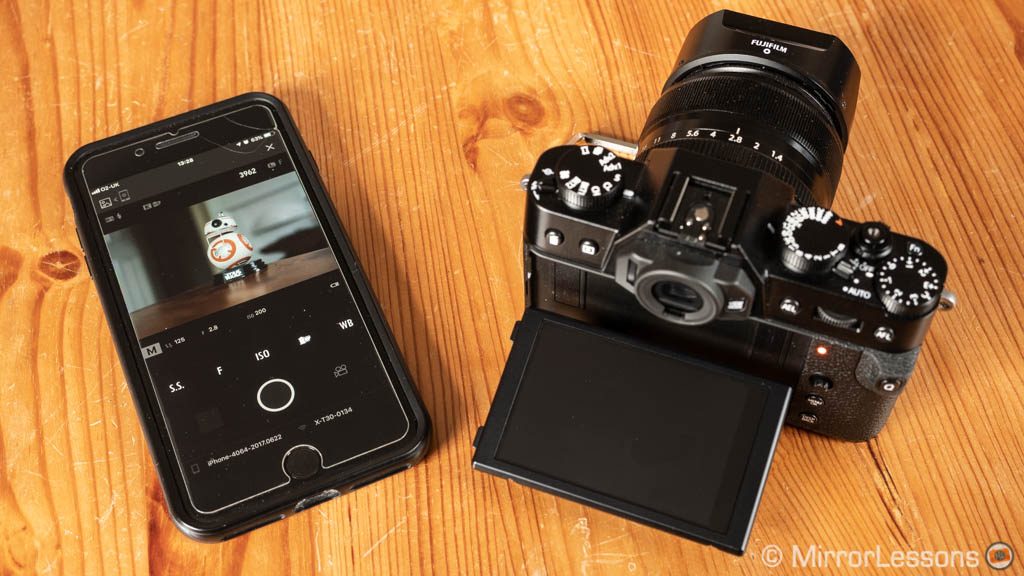
Bluetooth is more straightforward to use on the X-T30. The pairing process is quick and while you still need to connect to the camera’s wifi network to transfer images or remotely control the camera, you can do everything from the Fujifilm app rather than having to switch to the phone’s general settings. The only annoying thing is that if you go back to the homepage of the app, the wifi connection disconnects. I hope a future update will fix this.
You can only transfer JPG files. You can set an auto transfer mode with bluetooth where the images you take are automatically tagged. Unfortunately they are not sent right away; you need to go into playback mode for the transfer to start. As for remote control, you can change various settings including exposure, white balance and film simulation mode, but not the type of file or video resolution.
With the Fuji solution you can also update the camera’s firmware through the mobile app which is a more seamless process than downloading the file from the website and putting it on the SD card.
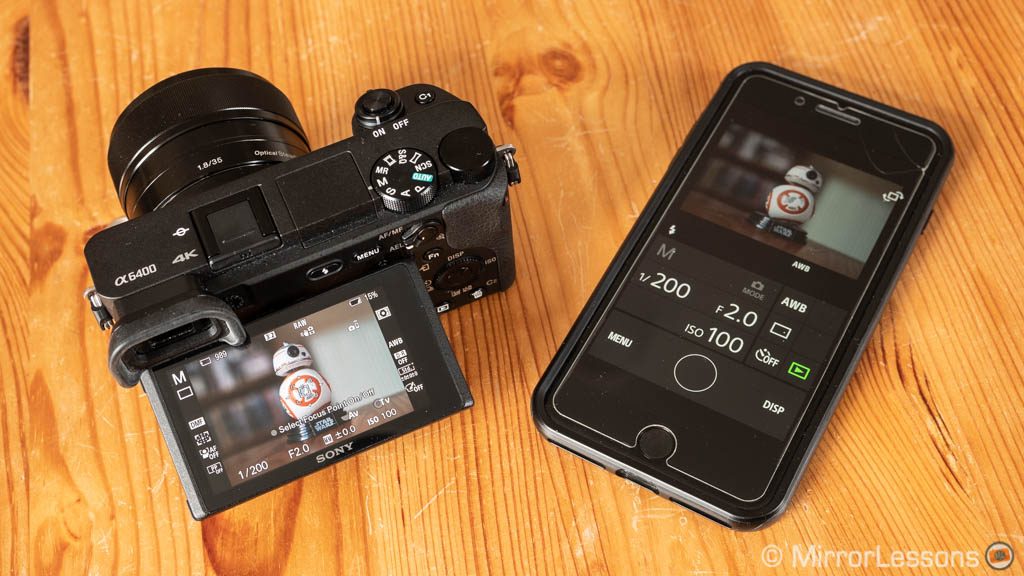
The same operation on the a6400 is more disappointing. Bluetooth can only be used for location data and nothing else. I couldn’t connect the camera using the QR code, I kept having an error message. I did it the old fashioned way which is to go to your phone’s wifi settings and select the camera’s network name. I was supposed to enter a password for that but it connected without it instead. Confusing to say the least.
The new Imaging Edge app has an old designed that reminds me my first iPhone 3G – definitely not what you’d expect from a new 2019 app. You can control the camera and change basic settings but there is no option to go back to the main menu of the app. Sony seriously needs to improve this.
One thing you can only do with the a6400 (at least on paper) is transfer video files but my iPhone is not compatible with the XAVC S format, and didn’t accept a proxy file either.
Conclusion: X-T30 vs a6400, which one to choose?
The Fujifilm X-T30 and Sony a6400 tick many boxes. They are compact and lightweight, competitively priced and pack excellent performance, image and video quality.
The small size brings a few limitations to the ergonomics, and to my surprise, it is the X-T30 that I like less. Yes, it is more intuitive to use, but the lack of a decent front grip and the poorly placed Q button got on my nerves more than I expected. (I know, my large hands don’t help.) Despite the laborious interface of the Sony, I found it more comfortable to hold and use.
Interestingly, they also share a few negative points such as imprecise controls (the joystick on the Fuji, the rear wheel on the Sony). What Fujifilm gets right is the touch screen which is very reactive and allows you to do many things. But if you want an LCD that tilts up 180˚, you’ll have to choose the Sony, which also offers touch gestures but with fewer options.
There are not a lot of differences when it comes to image quality, if not the colour profiles to which each brand applies its own colour science. Indeed, the result can be quite different depending on the settings used. When it comes to the RAW files, the X-T30 is a bit stronger in the shadows, whereas the a6400 is better in the highlights and has a bit of extra sensitivity.
The autofocus performance is perhaps the best part. The X-T30 has improved face and eye detection, which is still not quite perfect but better than it has ever been. The camera didn’t disappoint when put through its paces and there are lots of settings to tweak the performance according to the subject being photographed.
The a6400 isn’t a game-changer in comparison to its predecessors but it is still blazingly fast. It doesn’t matter if you choose the widest area available, it always understands what and where the subject is. What’s more, the new real-time tracking is the most impressive tracking mode I’ve tested to date. Face and eye detection are still the best in class, and Eye AF can detect animals too.
Video-wise, the X-T30 has raised the bar, offering excellent quality for a camera of this price. You get a lovely colour rendition, excellent dynamic range and fast autofocus if you need it. The Sony is good too, although you need to switch to the Picture Profiles to make the most of it and they can be a bit overwhelming for newcomers. But as with many things, it is just a question of patience and learning. What’s a shame on the Fuji is that it still can’t increase the recording duration to the standard 30 minutes per clip. The Sony on the other hand has bypassed that, offering unlimited recording.
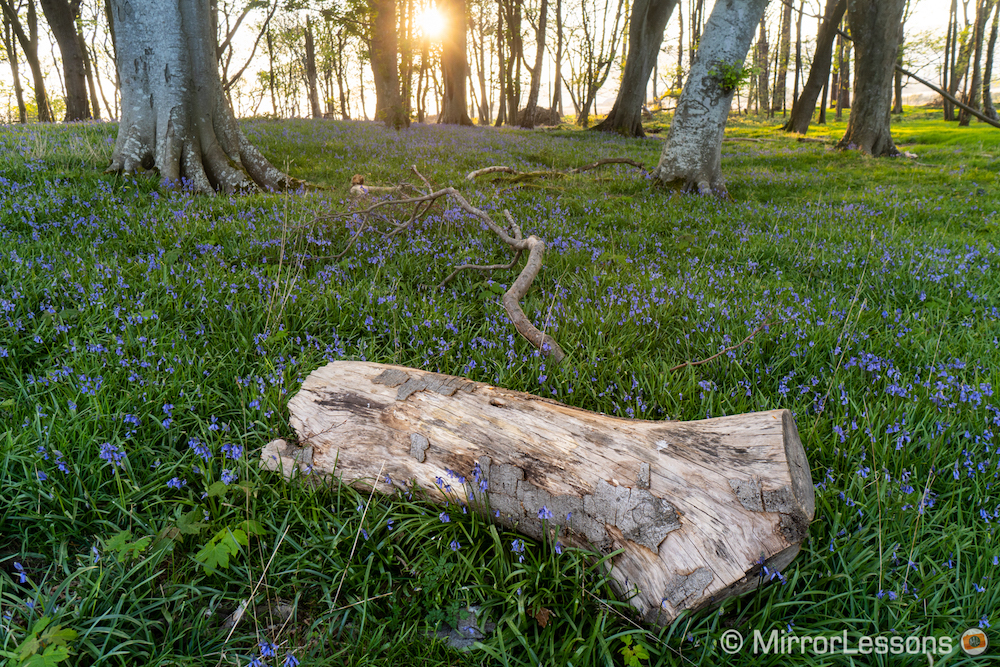
Apart from the design, which neither brand dared to change, these two cameras bring a breath of fresh air to a mirrorless market that has become congested with the full-frame models, many of which are expensive.
One last point to keep in mind is the lens selection. Fujifilm now offers a pretty complete system for every need and budget. With Sony it depends from which perspective you look at it. The lens catalogue isn’t great, with many slow zooms and only a few fast primes. There is Sigma with its fast and affordable Contemporary series, but it is clear that Sony has focused its efforts on the A7 series (understandably), and while certain FE lenses (telephoto especially) can suit the APS-C sensor, many of them are on the large and expensive side.
Strengths of the Fujifilm X-T30:
- more intuitive to set up
- faster continuous shooting speeds with a blackout free-live view when using the electronic shutter
- a bit better at shadow recovery
- video quality with beautiful colour rendition
- 10-bit 4:2:2 via HDMI
- more operations available with the touch screen
- better wifi and bluetooth integration
- vast selection of native lenses
Strengths of the Sony a6400:
- the larger front grip makes it more comfortable to use
- 180˚ tilting screen
- better highlight recovery
- face and eye detection is more accurate and also works with animals
- the real-time tracking mode is the best to date
- larger buffer memory
- more advanced video settings
- better dynamic range when using Log profiles
To consider:
- price is similar although this can vary a little depending on the country and currency
Choose the Fujifilm X-T30 if:
- you want a more straightforward interface
- you want an easier camera to use for video
- you want a more distinctive colour palette
Choose the Sony a6400 if:
- you want a better grip
- you need a screen that tilts 180˚
- you want an autofocus system that works seamlessly no matter which settings you use
Reminder: the links below are affiliate links. If you decided to buy something after clicking the link, we will receive a small commission.
Check price of the Fujifilm X-T30 on
Amazon | Amazon UK | eBay | B&H Photo
Check price of the Sony a6400 on
Amazon | Amazon UK | eBay | B&H Photo
Gear used and additional links
We tested these two products with various lenses. Here is some feedback about each one of them.
Sony lenses
- E 10-18mm f/4 OSS: the only ultra wide-angle zoom for the system with AF; sharpness is best between f/5.6 and f/8 and it features optical stabilisation which is an added bonus on a camera like the a6400 (check price on B&H Photo)
- E 35mm f/1.8 OSS: a fast and compact prime that delivers good sharpness at all apertures (except corner sharpers at the fastest values) and features optical stabilisation (check price on B&H Photo)
- FE 85mm f/1.8 OSS: a portrait lens that is reasonably priced and delivers excellent performance in terms of sharpness and bokeh. On the a6400 it gives you a 127.5mm equivalent field of view which is still in the popular range for portraits. It also served us well for low light events and concerts (check price on B&H Photo).
- FE 70-200mm f/2.8 GM OSS: the only 2.8 constant telephoto zoom available for the E-Mount system right now, it worked really well during the football game thanks to its fast AF motor and optical performance at the fastest aperture. Given the expensive price though, you might also want to consider the f/4 version which isn’t as good but an excellent performer nonetheless (check price on B&H Photo).
- FE 100-400mm f/4.5-5.6 GM OSS: my first encounter with this lens wasn’t positive but I believe that this specific sample had a defect. Every other time I rented it I was always very pleased with the results. The zoom range is perfect for an APS-C camera if you’re interested in wildlife and the optical performance is stunning. However it is heavy and very expensive (check price on B&H Photo).
Fujifilm lenses
- XF 18-55mm f2.8-4 R LM OIS: one of the kit lens available with the camera, it is also one of the best kit lenses you can get, period. Good sharpness, faster aperture range than the 3.5-5.6 norm and it has optical stabilisation. If you’re looking for your fist digital camera, this is certainly one of the best lens to start with (check price on B&H Photo).
- XF 35mm 1.4 R: it’s old with a noisy AF motor, but we’re still fond of the quality and look this prime can produce, as well as the handy fast aperture. The latest AF system of the X-T30 helps the lens focus faster than ever before, so we’re planning on keeping it (check price on B&H Photo).
- XF 18-135mm f3.5-5.6 R LM OIS: it’s not the best example of optical performance if it is sharpness you’re after, but this lens gives you an excellent zoom range (the classic all-purpose lens), a very fast AF motor which is why we use it often in our autofocus tests, and excellent optical stabilisation, which among the best made by Fuji (check price on B&H Photo).
- XF 50-140mm f2.8 R LM OIS: if you want top performance from a telephoto lens, this is the one to get. It has a super fast AF motor, good sharpness wide open and an excellent range for sports events. Plus it isn’t too big or heavy so it remains quite comfortable on the X-T30 (check price on B&H Photo).
You can check out some additional photos and download original files by clicking on the links below:
Additional comparisons:


